Times Assiniboia















It’s a dream come true for the Assiniboia Senior Rebels as they are once again Champions of the Notekeu hockey league 2024 season.
The Senior Rebels defeated the Yellow Grass Wheat Kings in the final round of the league playoffs. The Rebels won three games, while the Wheat Kings had two wins.
This is the third consecutive year the team has successfully brought home the trophy since COVID. The team demonstrated sportsmanship, skill and teamwork at its best for all other teams in the league.
The Assiniboia Senior Rebels have won 14 out of 16 league championships.





Let
Coolidge Hearing Care is pleased to bring back the “Level Up” promotion for the months of March and April.
Your name will be entered into our draw to win your entire purchase back!
The draw will be done live on our Facebook page at the Assiniboia Chamber of Commerce Trade show.
Saturday, May 4th at 3 p.m.
Give us a call today!
306-642-4242

Sherri Solomko
Freelance Reporter
Barb Compton, chairperson for Safe and Healthy Communities Assiniboia, a registered charity organization, organized an educational session for community members on internet safety. The organization promotes injury prevention and safety practises and more information on this group can be found at www.safehealthycommunities.com.

Compton says they are often challenged with communicating events and programs they host. A recent valuable informational session outlining the importance of internet safety in families was not as well attended as they had hoped.
“Last May, in collaboration with RCMP we hosted school presentations on internet safety. Considering the increasing crimes of exploiting children using the inter-
net, we booked a parent and community follow up session with the Saskatchewan Internet Child Exploitation Unit.
ICE is an integrated unit that falls under the Criminal Investigation Division of Regina Police Service. SHC worked with our local RCMP to secure a date to host this presentation. The ICE team covered the following topics: statistics, how the advancement of technol -
ogy has changed youth, Apps and online gaming, sextortion, red flags to watch,” added Compton.
Assiniboia Mayor Sharon Schauenberg, who was one of the attendees, said, “This was an event that was hosted by the ICE division of the RCMP in conjunction with our Safe and Healthy Communities volunteer board at Assiniboia 7th Avenue School on March 6.”
Continued on page 3












Water Service Disruption Notice
Premier Scott Moe has announced that Saskatchewan’s 2024-25 Municipal Revenue Sharing (MRS) Program will set a new record at $340.2 million, an increase of approximately $42.3 million more than the previous year.
This increase is a 14 per cent increase from the 202324 fiscal year, and a 167 per cent increase from 2007-08.
“Our government made the commitment to Saskatchewan communities to
create and support a predictable revenue-sharing tool that grows with our province’s economy,” Moe said. “With this announcement, more than $4.3 billion in provincial funding has been allocated since 2007 to support the priorities of municipalities.”
Provincial funding for MRS is based on three quarters of one point of the provincial sales tax revenue collected from two years prior. MRS provides pre-
dictable, no-strings-attached funding to municipalities who may allocate those dollars to their budget priorities.
The previous record for the overall MRS funding for a fiscal year budget was set last year at $297 million. The average annual provincial funding for this municipal program for the previous six years from 2018-19 to 2023-24 is more than $267 million.
The Targeted Sector Support Initiative will once
again receive a $1.5 million investment from the total MRS program. This initiative is co-managed by the provincial government and municipal partners, investing in projects that advance shared priority areas such as good governance, regional planning, and intercommunity collaboration.
Additional details on the allocations of MRS funding will be available when the provincial budget is released.

March 22, 2024 Civic News
This notice is to inform you that the Town of Assiniboia will be replacing 13 watermain valves on Centre Street starting Monday, March 18, 2024.
We anticipate four weeks minimum for construction and hope to minimize any inconvenience to our businesses/residents along Centre Street and the adjacent Avenues. All updates will be sent via Voyent Alert! Don’t miss out - You can sign up for Voyent Alert at www.assiniboia.net or call the Town Office at 306-642-3382.
Report a blocked Catch Basin!
It is that time of year where you will see the Public Works crew making their way around to steam catch basins for water flow. To report a blocked catch basin, please call the Town Office at (306) 642-3382. We will need the location of the catch basin, either by street address or intersection. We appreciate your patience as there are 200 catch basins in our community!
Help us help you – keeping your sidewalk, gutter and area around catch basins free of snow, ice and debris provides a clear path for melting ice & snow to enter the storm drainage system.
Pet Licenses
Pet licenses renewal notices have gone out tin the mail for the 2024 license season. Please visit the Town Office to renew your per license or give us a call to update our pet records. Pet licensing is an essential part of animal care & control in our community. A license tells everyone your pet is not a stray and you are eligible for waived running at large fines. Missed us during office hours? Payments can be placed in the Town Office drop box located next to the main entrance – make sure to include your renewal notice!
Town Office: 306-642-3382
Business Licenses
Our licensing year is from April 1st to March 31st,


Purple Day is an international grassroots effort dedicated to increasing awareness about epilepsy worldwide. On March 26th annually, people in countries around the world are invited to wear purple and host events in support of epilepsy awareness.

Willow Bunch Wind Project Open House
Willow Bunch Wind Project Open House

Continued from front page
“It was a very informative evening and brought much awareness about this topic. Unfortunately, there were very few of us in attendance, so the presentation fell on only a few ears,” said the Mayor.
She added that the value of bringing awareness of this topic is very relevant to not only urban, but rural communities.
Compton’s role as board chair has been since the registered charity was formed in 2020, and she affirms that it is her opportunity to give back to the community she grew up in, as well as where she worked as an educator and superintendent. Safe Communities Assiniboia and area was in place from 2010-2021, and transition to a registered charity, now known as Safety and Healthy Communities in 2020.
“It is a communitydriven initiative dedicated to elimination of injuries while promoting a culture of safety at home, work and
play, it also includes a focus on physical and mental wellness,” added Compton.
Compton is joined on the board by founding members, Bev Monea, retired accountant; Julie Knox, lawyer; and Kathy Kennedy, Hutch Ambulance. The coordinator is a paid position and held by Melissa Hansford. As of the Feb. 28 annual general meeting, Renee Clermont and Geraldine Ruzicka joined the executive team. To support their variety of safety and injury prevention programs in their communities, the organization also includes a number of members at large.
Funding for the organization is secured through donations, sponsorships and grant applications, as it is a registered charity that can provide a charitable receipt.
In addition to the recent child internet safety session presented in Assiniboia, the organization has offered information sessions on injury prevention, mature refresher driver safety course,
along with youth programs such as preventing alcohol related trauma and numerous mental wellness presentations. Child car seat safety programs are offered as well as progressive agriculture safety days, bike safety, poison prevention, concussion education and recognizing addiction awareness week.
Compton notes that the strength of Safe & Healthy Communities lies in their partnerships to continue supporting the established injury prevention and safety programs in a coordinated approach. The group is working with School Community Councils to host an Amazing Safety Quest this fall and consideration to host an Agriculture Safety Day.
Those interested in a presentation from this valuable organization based out of Assiniboia can email Melissa at safehealthycommunities@ gmail.com, phone Barb at 306-640-9807, or visit their website at www.safehealthycommunities.com.


















I’m happy to announce the return of the Rocket Report after a severalyear hiatus. I am a Grade 10 student at Assiniboia Composite High School, and I will be reporting on the extra-curricular news and events at the school.
This past month has been busy with the basketball team events. A big congratulations to the bantam girls’ team for taking gold in their district finals on home court this month!
The boy’s season ended last weekend in Moose Jaw where they came up short against Riverview during their conference game. The team has five seniors this year and their coach, Ms. O’Byrne, men-
tioned how she hopes the boys learned a great deal during their time on the team. “I hope the seniors learned perseverance and how to work through tough times.”
She also commented on how she is excited for what next year will bring and is ready to see what the next group of Grade 9’s will bring to the team next season.
The senior girls’ team headed to Lanigan over the weekend and ended their season with a win against Rosthern. The team has 11 seniors graduating this year and the co-captains Khanesia Warken and Sophie Simonsen reflected on what they would miss about the team after the game. “I’m going to miss
Assiniboia located in the SE 12-08-01-W3, as shown below within the bold dashed line and to be known as Parcel F.

Reason: To accommodate a proposed subdivision change west of the Town of Assiniboia as shown on a plan of proposed subdivision dated September 5th, 2023 and signed by Corban Christie, S.L.S.. The amendment will also provide improved alignment of land uses and zoning designations.
Public Inspection: The proposed bylaw may be inspected at the RM office, located at 100 Main Street, Limerick, SK, during regular office hours. Copies of the proposed bylaw will also be available at cost. Please contact the RM office to make arrangements to receive a hard copy or to receive a copy by email.
Public Hearing: Council will hold a public hearing on April 8th, 2024 at 10:30 a.m. at the RM office. The public hearing will be held at the RM of Stonehenge No. 73 Council Chambers, 100 Main Street, Limerick, SK. Any person or group that wants to comment on the proposed bylaws is encouraged to submit written comments prior to the public hearing. Written submissions may be sent by email to rm73@sasktel.net or dropped off at the RM office during regular office hours. For further information, please call the RM office at 306-263-2020.
Issued at the RM of Stonehenge No. 73 this 22nd day of March, 2024. Tammy Franks, Administrator
the bus rides with all the laughs and the jokes the most,” said Sophie.
“I’m going to miss practices and goofing around,” said Khanesia. “My advice for the next group of girls is that you get out of the program everything that you put in and it’s an investment and you have to work hard to see the results.” Sophie said, “Have fun, it’s just a game.” Both captains agreed that the one thing they learned throughout the season was how to be a leader and to trust their instincts and gut feelings.
Sadly, this is the last year for Assiniboia’s longtime girls’ basketball coach, Mr. Al Wandler. He has coached basketball at the high school for 25 years and during those years he started the Pink Games which take place annually and has inspired multiple schools across Saskatchewan to start and participate in similar fund-
raising events. Mr. Wandler said that he wants the senior girls to remember “That they can do hard things” when they go on to university. The captains of the senior girls’ team both agreed that Mr. Wandler’s dedication to the team and the basketball program will be
missed, and he will leave behind big shoes to fill.
Coming up in the following weeks are numerous badminton events. The first tournament for the senior team will be held on March 23 at ACHS and the junior badminton team will play on March 27 in Moose Jaw at Peacock
Collegiate.
The drama club is well underway preparing for their production of Alice in Wonderland, scheduled to take place in May.
Stay tuned for updates on badminton, drama, and track and field programs that are yet to come this school year.








SHURNIAK ART GALLERY
122 3rd Ave W, Assiniboia (306) 642-5292
Shurniak Art Gallery is looking for a tenant to lease & operate the Tea Room on a contract basis, during Gallery hours, commencing June 1, 2024. Kitchen equipment and furnishings provided. This space is located in a world class Art Gallery in Assiniboia, SK.
Email serious inquiries & applications to Gallery Manager, Jared Williams at shurniakgallery@sasktel.net Applications will be accepted until April 30, 2024.









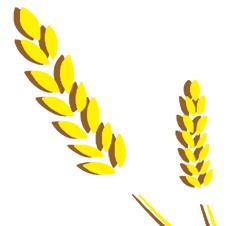


Spring is in the air, as the spring equinox occurred on March 19. There is so much to celebrate with the arrival of spring. The weather slowly starts to improve and get warmer, birds return from their migration, and it is time to start planting gardens and seeding cropland.
After months of dark and depressing winter days, I always look forward to the arrival of spring. It is a time of renewal, and there are lots of opportunities to enjoy nicer weather, and the great outdoors. There is something calming and relaxing about digging in the dirt while preparing to plant a garden, and just getting your hands dirty.
Typically, in my house I complete a spring cleaning project. I go through my clothes to see what items I no longer wear and can donate. I also make a list of what purchases are needed for a bit of a spring refresh. I usally tackle my spring cleaning in small steps, drawer by drawer, before getting into my closet. I find it easier to do a little at a time, once a week, instead of exhausting myself over a big project.
Due to some basement renovations in my home, this year I already have a few totes of items ready to be donated. Since many of these items were books and toys that my son used when he was younger, it was a nice little trip down memory lane. Many of these items are still in good condition, and can be donated to another family so they can make their own memories with the items.
Spring also has a cute side, as new life is often born in farmyards across the country during this time of year. As a city girl, it is something special when I have the opportunity




Publisher:



to watch a calf being born on my mother’s farm. I love seeing Facebook photos of newly born chicks, lambs, and barnyard kittens. There is a feeling of hope and renewal, as you watch a new life take their first breath.
One of the spring traditions that is engrained into my memory is hunting for crocus flowers in pastureland. It was a favourite activity during my childhood, during visits to my grandmother’s farm, where my siblings and I would compete to see who could find the first crocus of the year. It was always grandma Alice or grandpa Robert who found the flowers first.
Other core childhood memories include playing freeze tag on the lawn of my grandmother’s yard, or climbing a tree with an apple in one hand and a comic book in the other. I also can remember clearly the tree houses that we used to have, and the memories made while building it.
It is important that children get a chance to explore the great outdoors, and take some time away from technology. The memories that my son has of going fishing with his papa, or just splashing in the mud with his cousins, are ones that will always be special to him.
Spring can be a time of renewal. As someone who suffers from seasonal affective disorder (SAD), the long and dark winter months can be a difficult time. There were moments when I would just wake up feeling fatigued and unmotivated. Now that our daylight hours are getting longer again, there are less and less of these moments.
As we look towards the end of March, let’s hope that the weather will be ‘like a lamb’, after enduring cold and stormy ‘lion’ weather at the start of the month. I also hope for lots of April showers, to help renew moisture levels in our area, and create optimism for our local farmers.
The annual ban on pruning elm trees in Saskatchewan begins April 1 and runs until August 31. The ban is in place to protect the province’s elm trees by helping slow the spread of Dutch elm disease.
DED is caused by a fungus spread by elm bark beetles. These beetles are attracted to fresh cuts on elm trees. With warmer weather, these tiny beetles become more active, increasing the risk of infection. Adhering to the pruning ban reduces tree wounds during heightened beetle activity, helping reduce the spread.
In addition to respecting the pruning ban, there are other things you can do to protect your community’s elm trees:
Pruning your trees before or after the ban period keeps them healthy and better able to resist all kinds of diseases, including DED. Elm bark beetles are attracted to and breed in dead and dying elm wood, so eliminating their habitat with proper pruning reduces beetle numbers.
Improper pruning can damage trees and
spread diseases.
Transporting wood can spread DED and other insects and diseases. That’s why it’s illegal to use, transport, store or sell elm firewood. Provincial regulations restrict the use, transport, storage and sale of elm logs.
If you see an elm showing signs of DED - wilting, yellowing leaves on one or several branches near the top of the tree, usually beginning in late June - take a sample and submit it to the Provincial Crop Protection Laboratory for testing or report it to your local municipality at Crop Protection Laboratory | Crops Programs | Government of Saskatchewan.
Elm trees are often seen arching over the streets and have a distinctive umbrellalike canopy. They have dark green leaves that are oval or egg-shaped with a pointed tip. Elm bark is deeply grooved in older trees and silver grey in color. It can often be easily broken off to observe alternating red and cream ‘wafers’ in cross-section.

Federal Agriculture and Agri-Food Minister (AAFC) Lawrence MacAulay and Saskatchewan Agriculture Minister David Marit announced details of the 2024 Crop Insurance Program, administered by the Saskatchewan Crop Insurance Corporation (SCIC).
“As a farmer myself, I know it can be hard to protect your business while continuing to produce the food Canadians and customers around the world rely on,” Minister of Agriculture and Agri-Food Lawrence MacAulay said.
“In the face of increasing challenges, it’s vitally important that farmers in Saskatchewan have risk management tools available to them, like crop insurance, to help minimize the economic effects of production losses.”
“It is important to ensure Business Risk Management Programs are comprehensive and provide relevant, reliable coverage for the diverse operations of our Saskatchewan producers,” Marit said. “We recognize weather conditions brought significant challenges in recent years
and these programs are a producer’s first line of defense. I encourage all producers to take a proactive approach to tailor their coverage to further manage and mitigate their risk.”
This year’s enhancements build on SCIC’s existing suite of Business Risk Management programs that have demonstrated success in providing support to producers impacted by drought conditions. Over the last three years, this suite of programs has largely responded to weather-related production losses, providing over six billion dollars of insurance claims and other program benefits directly to Saskatchewan producers.
For 2024, multi-peril crop insurance average coverage is $389 per acre, a decrease from 2023, largely due to an average decrease in insured commodity prices. As a result, the average premium is also decreasing to $12.71. Producers’ coverage and premium are individualized to their operation. Coverage reflects each producer’s production records and premium reflects each producer’s claim history.
SCIC’s existing Weath-
er-Based Programs include Forage Rainfall Insurance, the Corn Rainfall Insurance, and Corn Heat Unit Insurance. The rainfall insurance programs provide protection in the event seasonal precipitation is below the long-term average, adjusted for extreme heat. The Corn Heat Unit Insurance Program insures against a shortage of heat units over the growing season. A selection of program options allows producers to tailor coverage to their needs.
Introduced for the 2024 Crop Insurance Program, SCIC’s weather-based programs now provide options to insure intercrops and additional feed crops. The Mixed Forage Rainfall Insurance Program protects any forage feed crop not previously covered under weather-based programs, including mixed forage, greenfeed and silage, if seasonal precipitation is below average. With the Intercrop Rainfall Insurance Program, annual intercrops intended for harvest can now be insured for below average seasonal precipitation.
Additionally, coverage is increasing for the 2024 Forage Rainfall Insurance
Program. Coverage levels now better reflect the productive capacity of the insured acres and increased transportation allowance (which recognizes the costs associated with replacing lost feed). Producers can select from three levels of coverage, Low, Medium, and High, offering flexible risk management and related premium cost options.
For 2024, SCIC is pleased to announce an additional 38 weather stations to supplement its existing network. All weather-based programs are enhanced by this increased weather station density province-wide. With 224 weather stations across the province, most land is located within 30 kilometres of at least one weather station. One weather station can be selected for each insured land location. This allows producers to insure each of their land locations with relevant coverage.
“During our Town Hall drought meetings last summer, producers emphasized changes to programs such as Forage Rainfall Insurance Program were needed to provide better coverage and flexibility, especially
during times of prolonged drought,” Saskatchewan Cattlemens Association Chair Keith Day said. “It’s clear to SCA that Minister Marit and SCIC took the feedback from those meetings into consideration when making changes such as increasing the number of weather stations, improving communications and increasing the transport allowance. Expanded coverage for cover cropping, green feed and silage is also a significant improvement. We will continue to work with SCIC to improve programs for the benefit of cattle producers.”
“SARM appreciates the province’s ongoing commitment to Saskatchewan agriculture and producers will appreciate the enhancements that were announced this morning,” SARM president Ray Orb said. “We thank the Ministry of agriculture and SCIC for listening to concerns brought forward from SARM and other organizations that will promote increased communications and provide better insurance programming for farmers and ranchers alike.”
March 31, 2024, is the
deadline for Saskatchewan producers to apply, reinstate or cancel their Crop Insurance contract. Producers must select insured crops and coverage levels or make additional changes by this date. Producers can speak to their local SCIC office to make any changes or coverage will remain the same as the previous year. SCIC offers a full suite of programs that can work together to ensure you have every angle covered. These include Crop Insurance, AgriStability, Wildlife Damage Compensation and Prevention Program and Livestock Price Insurance. We encourage producers to review their options and find the right coverage for their operation. For more information, contact a local SCIC office, call 1-888935-0000 or visit scic.ca.
Crop Insurance is a federal-provincial-producer cost-shared program that helps producers manage production and quality losses. Support for the program is provided by the governments of Canada and Saskatchewan under the Sustainable Canadian Agricultural Partnership (Sustainable CAP).
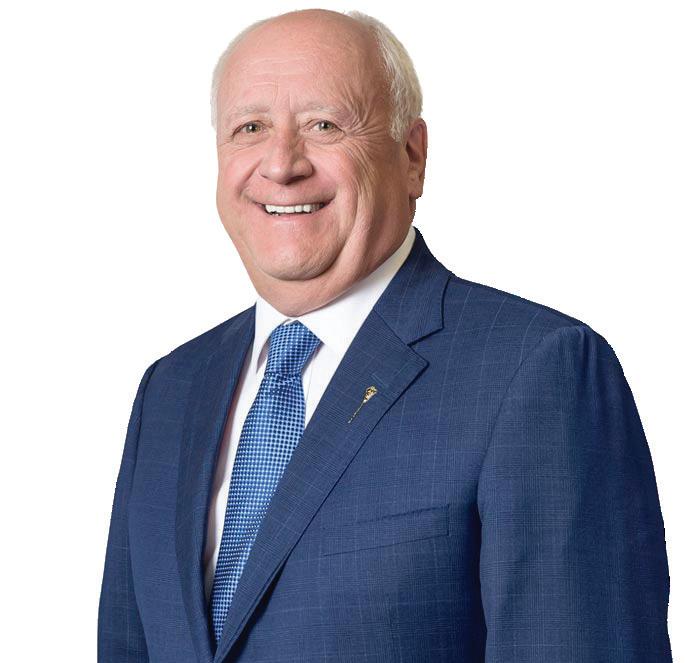
The story of Dean and Darlene Dosch is a story that involves coming home. Their choice to farm organically comes from their belief in the importance of not using chemicals for not only themselves and their consumers but for the environment. Southern Saskatchewan, namely Willow Bunch, is home to the family farm operation.
As the demand by con-
sumers for organically produced product along with healthier eating options has helped the Dosch Family continues their goal of a sustainable and viable organic farm.
The Willow Bunch farm family started out with flax but have since evolved into a snack product, known as Wheat Crunch.
For the Dosch family, it started as a way to raise a family in a chemical free life in a rural, small-town
setting while keeping their business local, rural and in their own words, ‘connecting with dirt’.
Their website, doschorganic.ca, states, “As a farmer, one must be able to take every challenge they are faced with and find a solution. Every year is a gamble. Gamble with the weather, with markets, and buyers. For us we wanted to give Canadians what they and most of us are wanting; a local product,


grown here in Canada on our very own farm. “
This family-owned farm in Saskatchewan has been in operation since 1960, and as with any farming operation has diversified and evolved to stay viable.
“On our farm we make sure to preserve land to its natural state as much as possible with preserving the wetlands and trees so animals and birds have a home. Placing bee houses to help save the bees that protect our planet. Making sure that our water ways are seeded to grass so water doesn’t erode the soil. Planting flowers in rock piles. Helping mother nature and doing our part for tomorrow’s generations is part of what we feel we
need to do today,” says the Dosch family.
Their Twitter bio states, “We are on a mission to give Canadians and others what they, and most of us are wanting; a local product, organic, vegan, grown here in Canada and on our very own farm.”
One of their products sold is organic flax, which is packed fresh from the farm, never mixed with other flax varities, giving it a great flavor. Benefits of their flax includes nonGM, gluten free, organic flax product that serves as a source of fibre and contains omega-3 polyunsaturated fatty acids. These benefits support overall health and can be served in smoothies,
cereals, breads, muffins, cookies, salads and yogurt. Their newest product, Wheat Crunch, is vegan and nut free. Offering a variety of flavors and serves as a high-quality nutritional snack.
The family’s business website says their product is sold at a variety of locations and they also offer a fundraising option with their snack products. The family also attends a number of trade shows to promote their product.
To learn more about this family farm operation and their unique, organic products you can follow them on their business website and Dosch Organic Acres can also be found on Facebook.




The average value of Canadian farmland continued its steady climb in 2023, increasing by 11.5 per cent, slightly less than the 12.8 per cent increase reported in 2022, according to the latest FCC Farmland Values Report.
In Saskatchewan, average farmland values increased by 15.7 per cent in 2023, following gains of 14.2 per cent in 2022 and 7.4 per cent in 2021.
“Farmland prices have continued to increase at a rapid pace over the last couple of years, even when economic conditions suggested the growth should slow,” said J.P. Gervais, FCC’s chief economist. “A limited supply of available farmland combined with a robust demand from farm operations is driving that growth.”
The highest average provincial increases in farmland values were observed in Saskatchewan, Quebec, Manitoba and Ontario, with double-digit average increases of 15.7, 13.3, 11.1 and 10.7 per cent, respectively.
Four provinces had single-digit average increases and were below the national average at 7.8 per cent in Nova Scotia, 7.4 per cent in Prince Edward Island, 6.5 per cent in Alberta and 5.6 per cent in New Brunswick. British Columbia recorded an average decline of 3.1 per cent, yet the province has the highest farmland values on average.
There were an insufficient number of publicly reported sales in Newfoundland and Labrador, Northwest Territor-
ies, Nunavut and Yukon to fully assess farmland value trends in those regions.
“The land market has shown to be very resilient,” said Gervais. “Purchasing land in the year ahead will come with careful consideration of the price and timing. Some operations will prefer to wait and see where land values will settle while others may move more quickly should adjacent land become available, or simply because it fits their strategic business plans.”
The number of farmland transactions in 2023 is estimated to have declined slightly relative to 2022 as farm operations exercised more caution towards investment decisions. “The expectation of weaker farm revenues and ele -
vated borrowing costs and input prices are expected to stretch out this cautious environment for farmland transactions into 2024,” according to Gervais.
Gervais acknowledges that lower affordability of farmland is challenging for young producers, new entrants and those aspiring to grow their land base. This can expose some operations to more risk as they navigate higher rental rates and input costs.
Receipts of grains, oilseeds and pulses in Canada increased by 0.4 per cent in 2023 and are projected to decline by 13.2 per cent in 2024. “An important part of preparing for inevitable yet unpredictable economic changes is not only creating a risk management plan, but also updating it as those shifts in the econ-
omy unfold,” said Gervais. “Staying informed on the external factors like commodity prices and interest rates can help producers build in the necessary flexibility in their budgets.”
“The good news is that farmland value increases reflect a positive outlook for the demand of agriculture commodities and the quality food we produce in Canada,” Gervais said. “Producers have a long track record of making strategic investments in land. These long-term investments in food production have spurred growth and create a bright future for Canada’s agriculture and food industry.”
By sharing agriculture economic knowledge and forecasts, FCC provides solid insights and expertise to help those in the busi-
ness of agriculture achieve their goals. For more information and insights, visit fcc.ca/Economics.
FCC is Canada’s leading agriculture and food lender, dedicated to the industry that feeds the world. FCC employees are committed to the long-standing success of those who produce and process Canadian food by providing flexible financing, AgExpert business management software, information and knowledge. FCC provides a complement of expertise and services designed to support the complex and evolving needs of food businesses. As a financial Crown corporation, FCC is a stable partner that reinvests profits back into the industry and communities it serves. For more information, visit fcc.ca.
Electricity-powered tractors are increasingly showing up on farms in Canada. Here are some reasons why this technology is the way of the future.


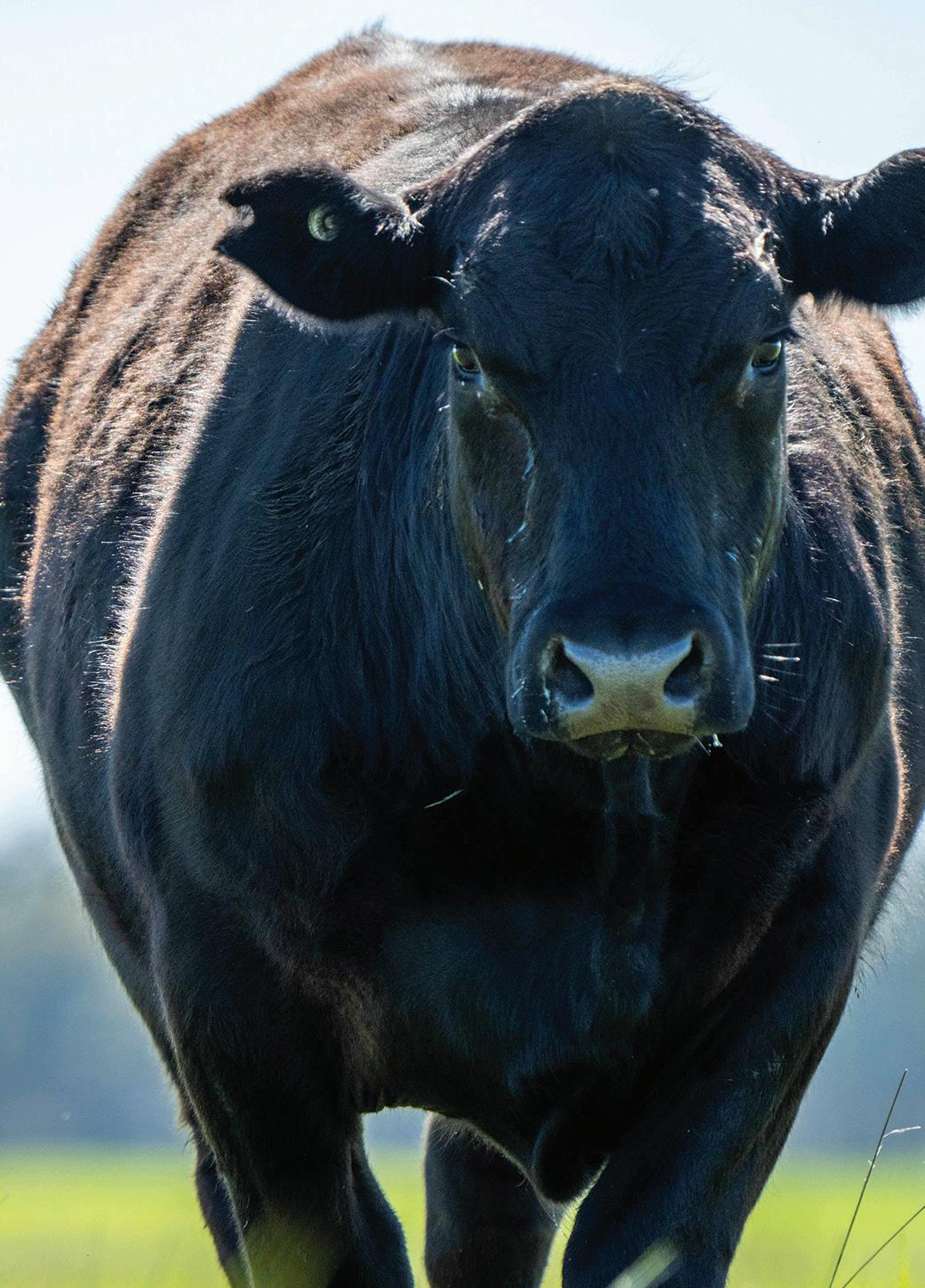
• They’re cleaner to operate. Unlike diesel, electric tractors don’t produce harmful CO2 emissions or other air pollution. This makes them better for the environment. Farmers also don’t have to worry about inhaling toxic fumes while working in enclosed spaces like dairy barns.
• They run more quietly. Diesel tractors produce over 85 decibels of noise, which has been proven to cause permanent hearing damage over time. Electric tractor motors are extremely quiet and produce almost no noise.Electric tractors can make it easier for workers to communicate with each other, ultimately creating a safer work environment.
• They’re cheaper to run. Electricity is a fraction of the cost of diesel. Solar panels can also power electric tractors. Therefore, farmers don’t have to worry about the extreme price fluctuations of fossil fuels.
• They’re more efficient. Electric tractors are much more efficient than diesel models because all the energy goes into work. In a diesel tractor, much of the energy is wasted as heat. Additionally, electric motors have massive torque at low speeds.
• They require less upkeep. Electric tractor engines have fewer moving parts than diesel ones, requiring little maintenance. There’s no engine oil to replace, oil filters to change, or engine tune-ups to schedule. Even the batteries are projected to last about 10 years, depending on operating cycles and depth of discharge.
Although electric tractors weren’t an option for most farmers until recently, many big brands are coming out with afforda ble and practical electric tractors.
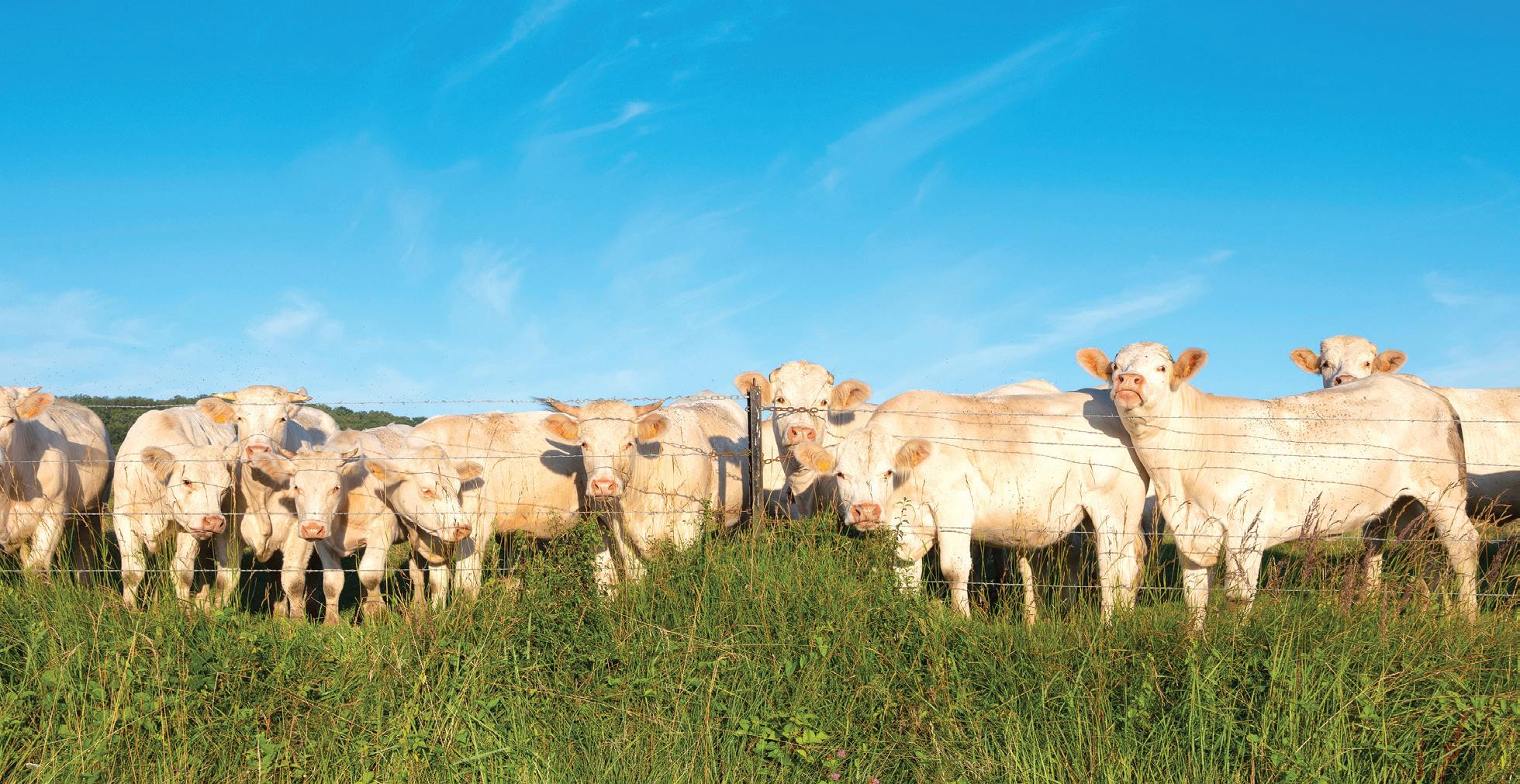


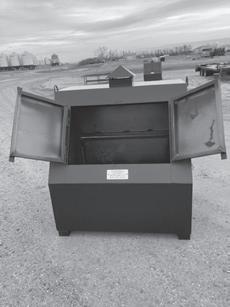

With 11 locations in Saskatchewan, Paterson Grain is a division of Paterson GlobalFoods Inc. Assiniboia welcomes a new manager at their location in January of 2024 when Perry Kutz moved to fill the role of General Manager.
The company’s website, https://www.patersongrain.com, tells the story of the agricultural company that includes Assiniboia in its Saskatch -
ewan locations.
Kutz says he had been living in Saskatoon since high school and had come to Paterson Grain from DMM Energy in the Esso bulk fuel business, serving as Regional Manager of Operations.
“I was looking to get back into the Grain business and the opportunity in Assiniboia with Paterson Grain was an exciting career proposal that I wanted to pursue. I have been fortunate to meet Gord Mellquist who was
in the same position with Paterson Grain for over 40 years and we have become good friends and Gord has introduced me to lots of people in the community,” added Kutz.
The new GM says he enjoys meeting new people and the team at Assiniboia’s Paterson terminal are very knowledgeable.
“I have been in management for several years and providing excellent customer service and a safe work environment for
The Government of Saskatchewan announced more than $19 million to ensure the continued success of irrigation districts in the province.
The funding will help to sustain irrigation infrastructure formerly owned by government and support future development opportunities. This includes pumps, pipes, canals and associated water management infrastructure.
“This announcement reaffirms the government’s commitment to supporting irrigation within Saskatchewan,” Agriculture Minister David Marit said.
“More than 55,000 acres of irrigation were developed between 2020 and 2023, and this investment will help keep this infrastructure working and help our producers for years to come. These funding agreements will also help us reach our Growth Plan target of 45 million metric tonnes of crop produced by 2030.”
Irrigation allows more diverse crops to be grown and increases the number of livestock that can be supported. It is also important for diversifying rural economies and stabilizing crop production with a consistent source of moisture.
The Government of Saskatchewan is committed to creating more irrigated acres and supports irrigation in the province through the Irrigation Rehabilitation Program,
the Irrigation Development Program and the Irrigation Efficiency Program.
The six irrigation districts that will receive this Irrigation Rehabilitation Program funding are:
• Luck Lake Irrigation District, to receive up to $3.8 million over five years.
• South Saskatchewan Irrigation District, to receive up to $9.5 million over five years.
• Riverhurst Irrigation District, to receive up to $3.8 million over five years.
• Moon Lake Irrigation District, to receive up to $159,005 over five years.
• Grainland Lake Dis-
trict, to receive up to $441,180 over five years.
• Miry Creek Irrigation District, to receive up to $153,710 over five years.
• The Miry Creek Irrigation District will also receive a one-time payment of $1.3 million from the ministry to repair the water intake portion of their pumping system as part of the asset transfer agreement.
Previously, Luck Lake Irrigation District, South Saskatchewan Irrigation District, Riverhurst Irrigation District, and Moon Lake Irrigation District were part of five-year funding agreements.
our employees are very important to me.”
Outside of work, Kutz says he enjoys attending Rebels hockey games as well as playing pickle ball Monday nights in the community. He looks forward to checking out all the great golf courses he has heard about in the area.
“Most of my family is in Saskatoon and both my
daughters live there. I have two grandsons that I really enjoy spending time with so I will be making the odd commute here and there to Saskatoon to see family.”
Paterson Grain Inland Terminal was the 8th inland export terminal constructed and is located on Highway 717, northeast of Assiniboia and began receiving grain in 2008.
The official opening of the new terminal was held June 25, 2009.
Paterson Grain is continuing to give back to the communities they serve through donations and sponsorships. One of their notable contributions included a three-year commitment to the Assiniboia Arena Project, totaling $187,888.35.




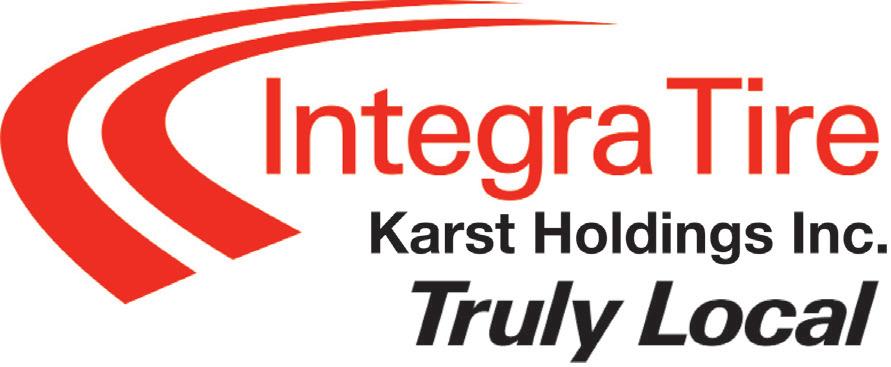





Bridges and
in communities across Saskatchewan will be replaced or upgraded after a com -
investment of more than
million from the federal and provincial governments along with municipalities.
These 12 projects were announced by Minister of Housing, Infrastructure and Communities Dan Vandal and Saskatchewan Government Relations Minister Don McMorris.
The new bridges will create safer and more efficient local routes. Investing in culverts will ease the flow of water underneath roads, relieving potential drainage issues in the future.
“Investing in rural community infrastructure projects, such as bridges and culverts, creates more seamless transportation and water distribution services,” Vandal said. “By providing new life cycles to these essential pieces of

Agriculture
infrastructure, we continue to deliver for Saskatchewanians through investments that will make a real difference to their everyday lives.”
Rural municipalities, like the RMs of Enniskillen No. 3 and Frenchman Butte No. 501 will see new culverts to help with safe water flow, while others like Lomond No. 37 and Star City No. 428 will receive funding for
bridge replacement projects.
“Our government understands the impact these projects will have on the communities receiving this funding,” McMorris said. “The importance of replacing and creating new infrastructure to build and protect our communities cannot be overstated. Projects like this could not happen without the cooperation of the communities
themselves. Our government is excited to have these projects get underway for our communities to reap the long-term benefits of growth and a stronger Saskatchewan.”
Investing in modern transportation infrastructure is critical to connecting communities, ensuring rural Saskatchewanians and their families have access to reliable infrastructure, and
building a strong economy for all Canadians.
The federal government is investing $1,378,474 through the Rural and Northern Communities Infrastructure stream of the Investing in Canada Infrastructure Program. The Government of Saskatchewan is investing $2,756,123 and the municipalities are contributing a combined $4,134,596 to their respective projects.
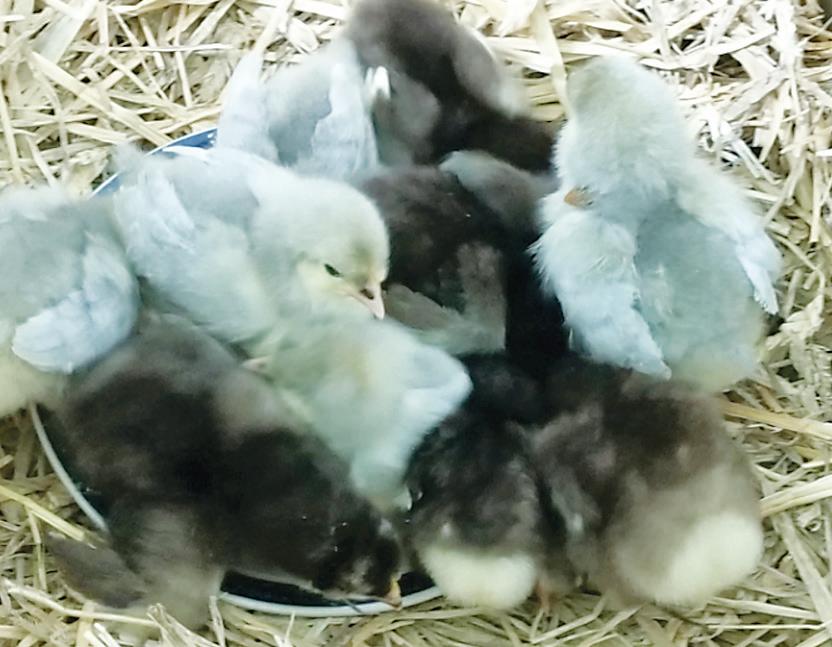


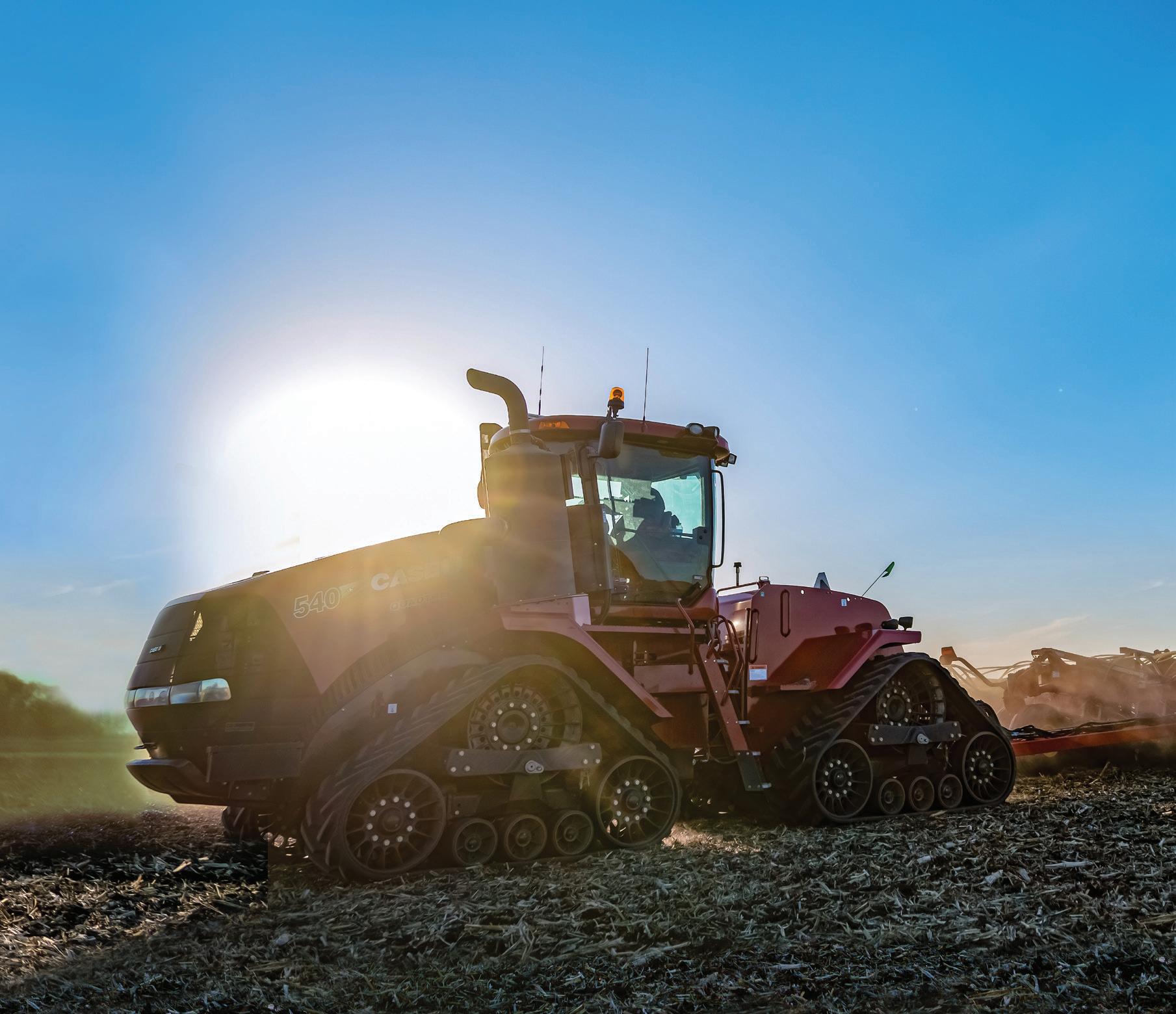






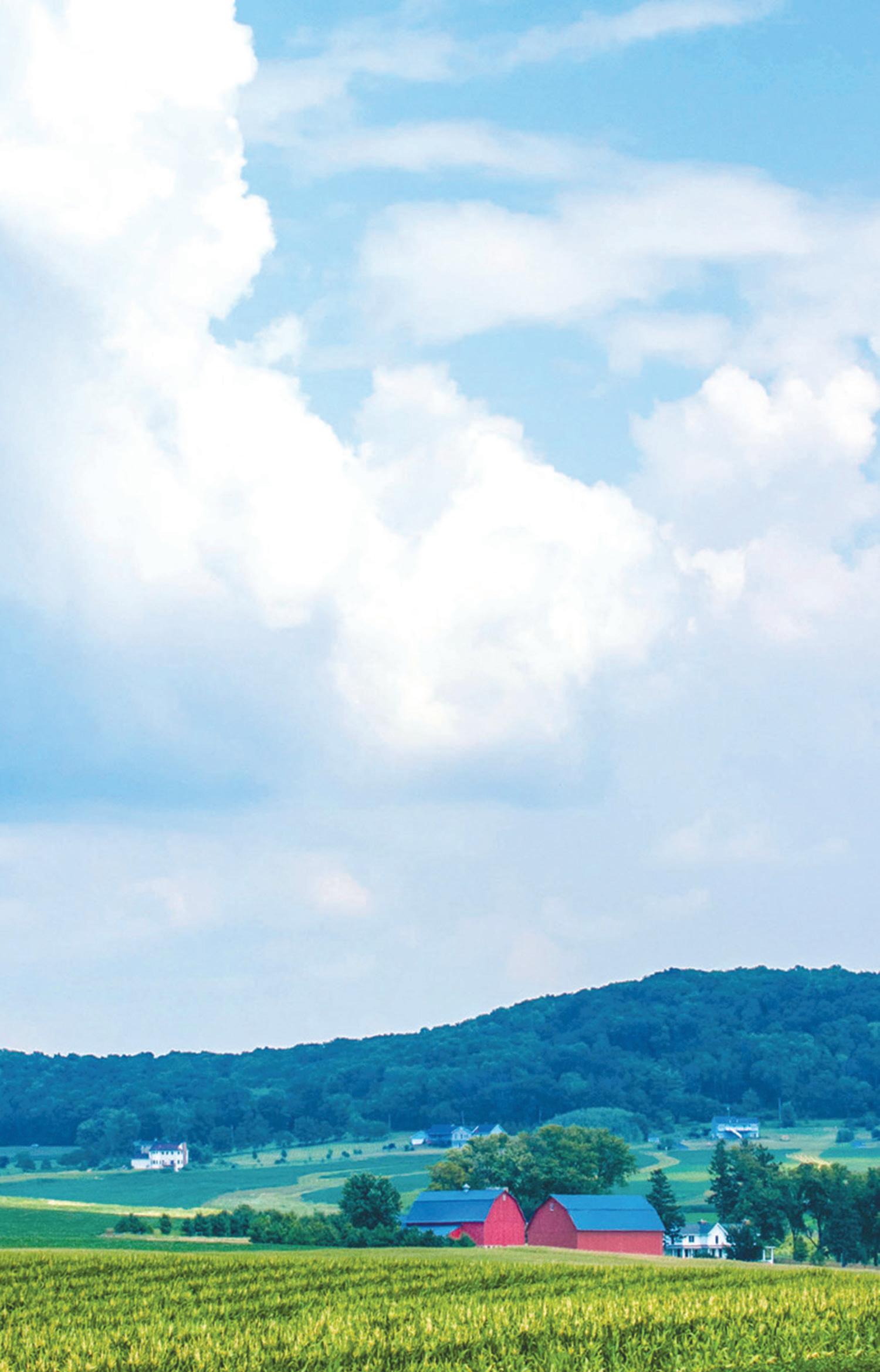







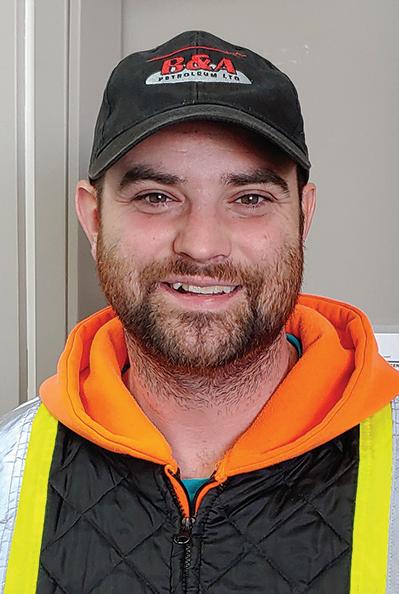
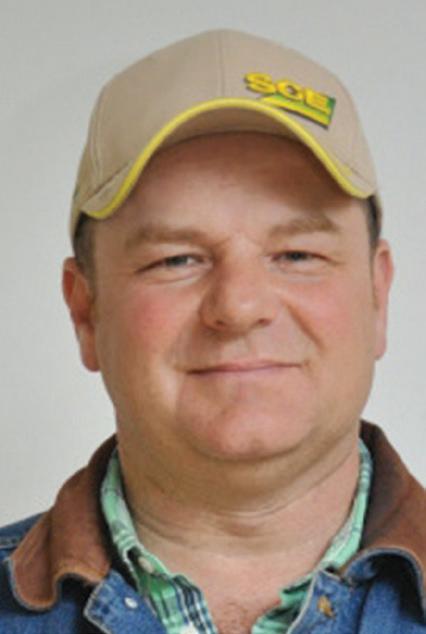


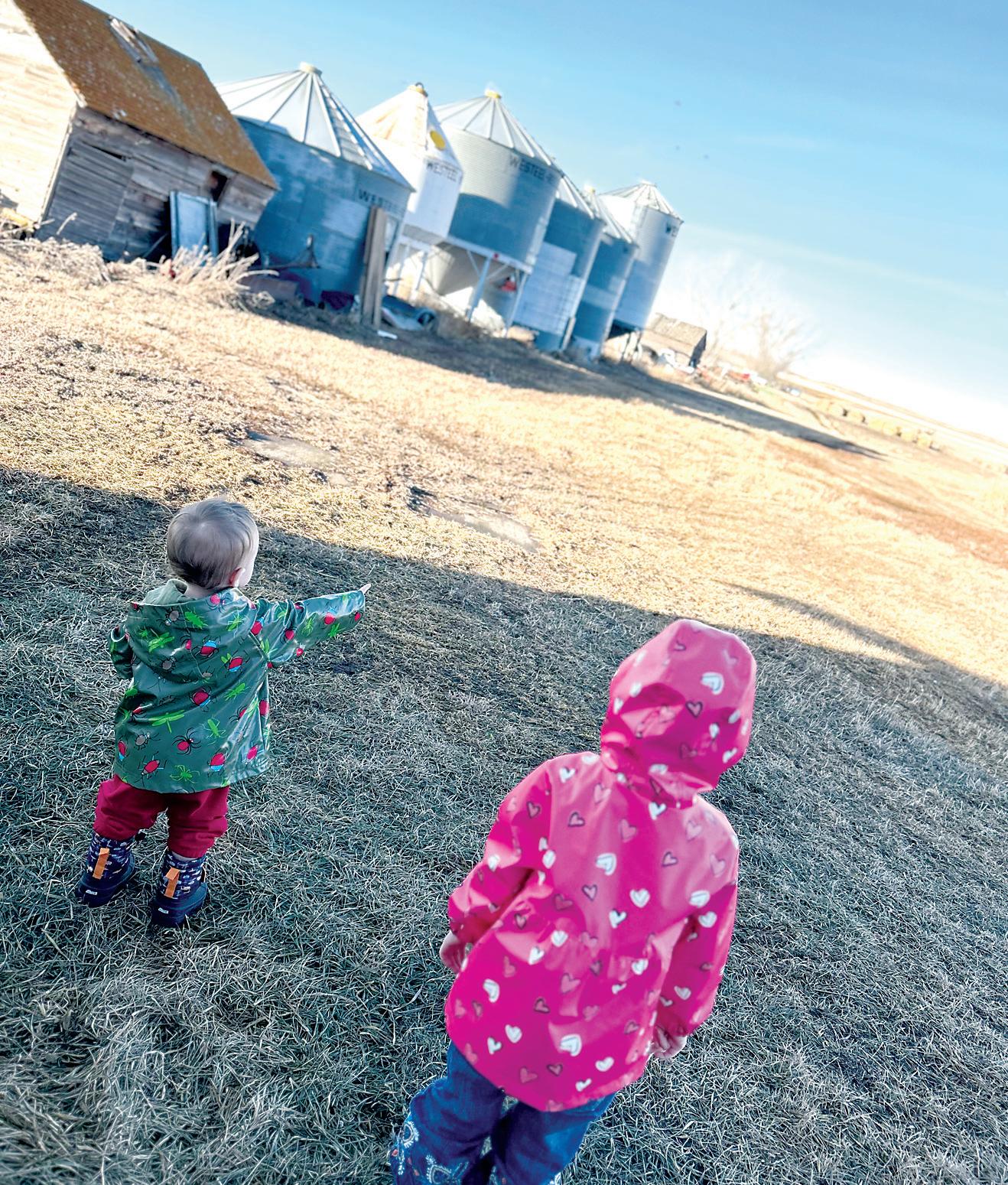

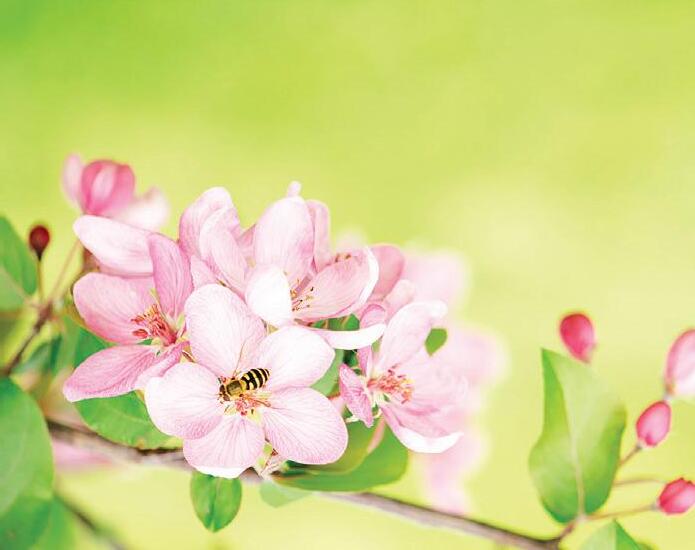





The Water Security Agency (WSA) issued the Spring Runoff Forecast for 2024. A near normal runoff is expected in the Saskatoon area and west toward Biggar, as well as in the eastern portions of
the grain belt along the Manitoba border. The remainder of the province is expected to experience below to well below normal runoff this spring.
As of March 4, 2024, snowpack gener -
ally ranges from below to well-below normal across the province. Recent snowstorms in early March brought up to 40 cm of snow to much of southern and central Saskatchewan, which has

improved runoff potential for the province.
“Although, the recent snowfall will help our situation and our producers this spring, we as a government will still be prepared to help those areas with dry conditions,” Minister Responsible for Water Security Agency David Marit said.
“More moisture will be needed as temperatures continue to stay above zero. WSA will still be taking as many proactive measures as possible to prepare for changing conditions.”
This runoff forecast report updates the preliminary report issued in February 2024, with the inclusion of data from snowpack surveys.
Over the winter, WSA took action with conservative operating plans focused on retaining water supplies that has helped keep water levels at most major reservoirs at or above normal levels for this time of year.
In some southern areas, including the Big Stick and the south-central area of the province, persistent drier than normal conditions may lead to drier than normal conditions and localized water supply shortages this spring.
The spring runoff is dependent on fall soil moisture, snowpack water content, and how quickly
the snowpack melts.
Although drier conditions persist, most major water supply reservoirs in southern Saskatchewan are at or above normal levels; however, reservoirs such as Avonlea and some in the southwest (e.g., Altawan and Cypress) may experience surface water supply concerns due to the depleted snowpack.
WSA continues to work internally and across
other government agencies to identify opportunities and programming to support communities and producers who may be facing challenges from dry conditions.
WSA continues to monitor moisture conditions and forecasted weather patterns in preparation for the spring runoff and will issue updates to the runoff report throughout the runoff period.

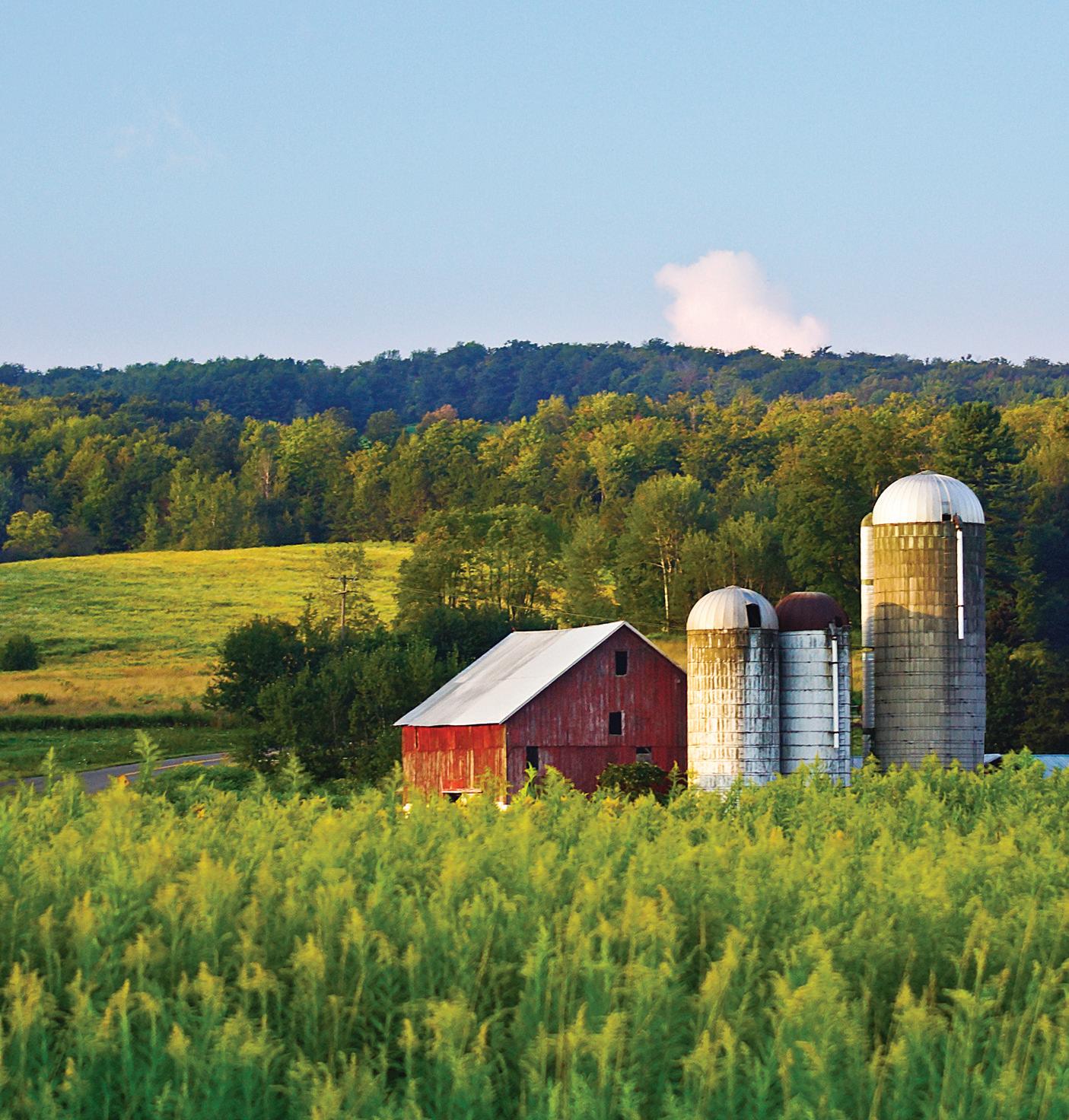




If you haven’t heard of Flexxifinger, which humble beginnings started near Assiniboia, then it’s worth scouring the company’s website to learn their intriguing history at https:// flexxifinger.com.
In the late 1990s, a farmer just outside of Assiniboia had a lentil crop laying on the ground because of weather damage. The only lifters available at the time were not giving him the results he wanted because very little of his
harvest was ending up inside the hopper. Instead of lifting his crop, those lifters were breaking the plants and pushing his lentils into the ground.
Dave Dietrich began designing a crop lifter and patented the idea and thus the company was born. The business website states, “The idea driving Flexxifinger’s innovation is pretty simple, recognize a need and fill it.”
Mr. Dietrich is the Owner/ President of Flexxifinger.
The website outlines
the company’s history, affirming, “Still based in Assiniboia, Flexxifinger QD Industries Inc. is the premier manufacturer of harvesting aid attachments. From its humble beginnings in a farmer’s shop, being sold out of a truck, and growing to a network of more than 500 dealers and/or distributors across North America, Australia, Europe and Africa, Flexxifinger has truly become the choice of mechanizedfarmers worldwide.
Tobias Scheur, General Manager of the Assiniboia

location said Flexxifinger was incorporated in 2005, and now currently employs 10 people. He started with the company in 2014.
Scheur says they promote their products at Ag Shows around the world as well as through social media and various other advertising venues.
Company strength plays a role in community
engagement and Scheur adds, “Flexxifinger is committed to sponsoring community projects. The people in and around Assiniboia have provided Flexxifinger with the opportunity to create a strong product that is invented, developed, produced and assembled in the community and used throughout the world. “
One such notable contribution to the community was a $20,000 donation to the Assiniboia Civic Improvement Association, Assiniboia Arena Project.
The company’s newest product, the Flexxifinger Multi-Crop Valve, was nominated for the ‘SIMA Innovation Award’ in 2022 at the SIMA Ag-Show held in Paris, France.








The Saskatchewan Wheat Development Commission (Sask Wheat) has invested nearly $3 million over five years into 13 projects through the Canadian National Wheat Cluster.
The Wheat Cluster projects will address common issues and challenges producers face, from developing varieties that use inputs and nutrients efficiently to developing durum varieties that are more tolerant to environmental stressors. A vital element of each project is keeping the sector competitive and economically viable. Each project focuses on this component and the Government of Canada’s climate change priorities.
“Our investment in plant breeding and research will keep wheat production in Saskatchewan sustainable and profitable,” said Sask Wheat Chair Jake Leguee, who farms near Fillmore. “It is important for industry and government to work together and for each to commit funding to develop improved varieties and conduct necessary research into diseases and pests.
“This partnership between government and industry will improve the competitiveness of our sector, allowing farmers to meet the needs of global customers and capture
market opportunities.”
These are the Sask Wheat-funded projects, including the researchers and Sask Wheat investment.
• Towards ClimateSmart, Resilient Wheat (Dr. Curtis Pozniak, University of Saskatchewan) - $216,918
• The Role of Wheat Growth Habit in Reducing GHG Emissions and Fostering Climate Resiliency without Compromising Yield, Quality and 4R Principles (Dr. Brian Beres, Agriculture and Agri-Food Canada (AAFC)) - $130,996
• A Prairie Assessment of Nitrogen Stabilizers and Split Fertilizer Application in Sustaining Spring Wheat Yield, Protein and Production Economics While Reducing Nitrous Oxide Emissions (Dr. Mario Tenuta, University of Manitoba) - $203,470
• High-Quality Wheat Germplasm Development to Mitigate Climate Change Risks and Promote a Clean Environment (Dr. Santosh Kumar and Dr. Richard Cuthbert, AAFC) - $864,562
• Economic Growth in Canada Through the Development of Durum Cultivars that Address Climate Change, Environmental Sustainability, and Agri-Food Resilience (Dr. Yuefeng Ruan, AAFC)$415,087
• Cultivar Enhance -
ment Through the Application of Biotechnology (Dr. Firdissa Bokore, AAFC) - $218,116
• Integrated Approaches to Develop Climate Resilient Canada Prairie Spring Red Wheat Cultivars for Western Canada (Dr. Harpinder Randhawa, AAFC) - $31,157
• Winter Wheat With Enhanced Economic, Environmental, and Ecological Sustainability for Western Canada (Dr. Harwinder Sidhu, AAFC)$161,006
• A Dual-Pronged Ap -
proach to Mitigate Fusarium Head Blight and DON Production (Dr. Gopal Subramaniam, AAFC)$236,246
• Gene Editing to Accelerate Delivery of Improved Genetics (Dr. Andriy Bilichak, AAFC) - $106,917
• Sustainable Control of Wheat Diseases Through Marker-Assisted and Resistance Gene Discovery (Dr. Colin Hiebert, AAFC) - $110,414
• Wheat Midge: Enhanced Surveys, Wheat Resistance Traits and
Midge Genetic Variation to Preserve the Sm1 Gene (Dr. Tyler Wist, AAFC)$45,294
• Developing WeedSuppressive No-Till Wheat Systems with Reduced Glyphosate Use (Dr. Charles Geddes, AAFC) - $219,453
AAFC, through the Sustainable Canadian Agricultural Partnership (Sustainable CAP) AgriScience Cluster Program, has provided over $11.2 million in funding for the Wheat Cluster. Industry and private organizations, includ-
ing or represented by Sask Wheat, Manitoba Crop Alliance (MCA), Alberta Grains, Western Grains Research Foundation, and Canadian Field Crop Research Alliance, have provided over $9.3 million in Wheat Cluster funding.
The Canadian Wheat Research Coalition (CWRC), a collaboration between Sask Wheat, MCA and Alberta Grains aimed at improving the net relative profitability of wheat for western Canadian farmers, will administer the Wheat Cluster.
Nutrient management is a practice that aims to optimize crop yield and quality, minimize fertilizer costs and protect soil and water. It involves applying the correct type of nutrient sources — like synthetic fertilizer or manure — in the right amount, place, and at the best time.
Here’s a look at how farmers manage this delicate balancing act.
The right amount
When determining the amount of nutrients to add to the soil, the first step is to estimate how much is required for a target yield. This relies on understanding how crops respond to fertilizer under different conditions. Farmers must also consider the projected selling price.
Additionally, farmers must determine the current nutrient level in the field through soil testing. The right amount of fertilizer to add is determined by calculating the difference between the requirement for a
target yield and the nutrients already in the field.
The right nutrient
Once farmers establish the nutrients to be added to the field, they must choose the best fertilizer product. Most farmers consult a professional agrologist or crop specialist for recommendations.
The right place
Nutrients must be placed as close as possible to the growing plant without damaging the crop. The greater the distance between the plant and the fertilizer, the greater the chance it’ll be lost before it can be absorbed.
The right time
Fertilizers should be applied as close as possible to when plants need them. Crops need the most nutrients during their fastest growth and seed production.
Understanding the principles behind nutrients and incorporating them into farm management is crucial to environmental sustainability.





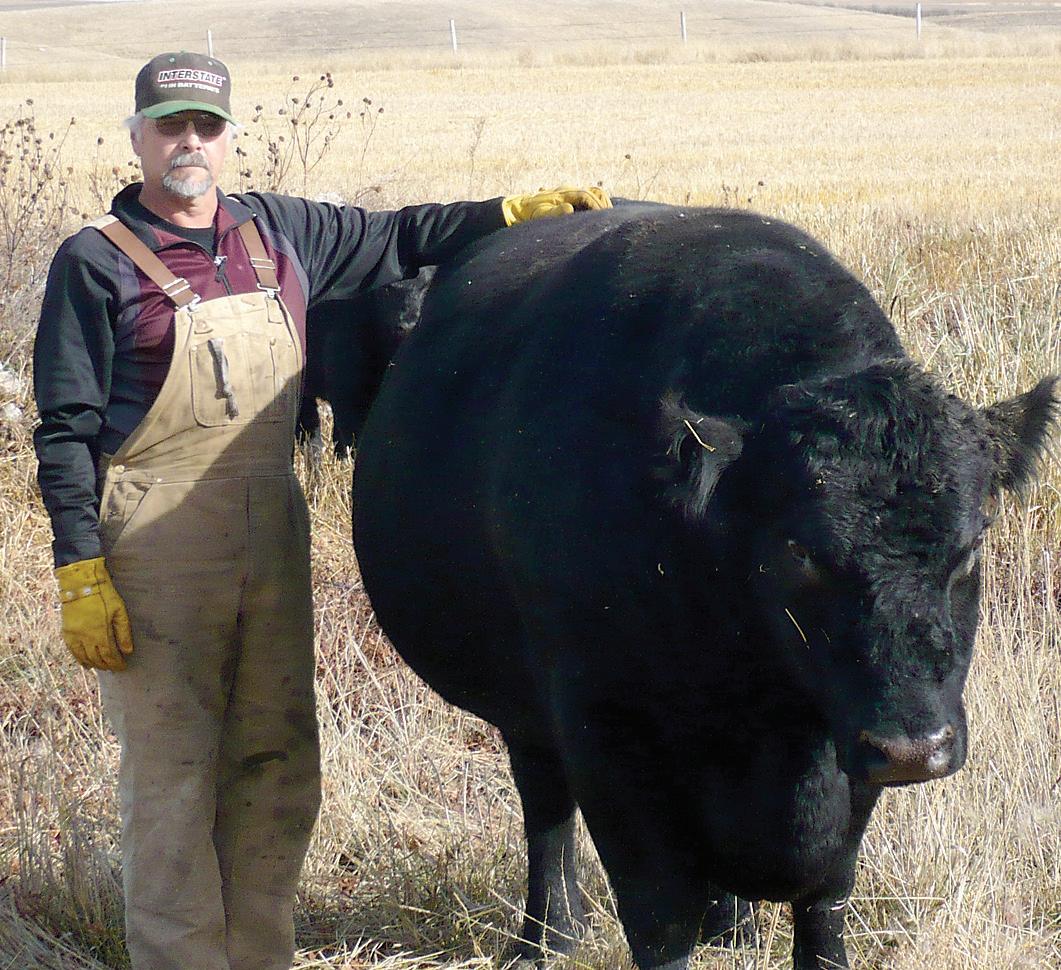


NEW
Phone
Your









The Government of Saskatchewan is extending its firearm safety campaign, “Secure Firearms. Safe Communities,” into the spring with updated materials to raise awareness about safety, education, proper firearms storage, and licensing.
The campaign features several well-known Saskatchewan residents who are acting as spokespeople for the campaign. The extended campaign features Saskatchewan Association of Rural Municipalities President, Ray Orb; and Elder and Senator with the Prince Albert Grand Council and Federation of Saskatchewan Indigenous Nations, Noland Henderson. Firearms owners are en-
couraged to get and maintain their Possession and Acquisition License (PAL/ RPAL) and keep their loved ones and our communities safe by properly storing all firearms and ammunition.
Other important safety tips include:
• learning how to safely load, handle and store every firearm you use;
• never pointing a firearm at anyone or anything you don’t want to shoot;
• storing ammunition separately from firearms or by locking it up;
• using the correct ammunition for your firearm;
• unloading all firearms before they are stored or when not in use;
• locking firearms in a
cabinet or safe or attaching a secure locking device - such as a trigger or cable lock - to ensure the firearm cannot be fired or stolen;
• ensuring unauthorized individuals do not have access to the keys or combination locks that are used to secure your firearm unless they are licensed and have your permission to use them; and storing firearms safely when they are being transported.
This year’s firearms safety campaign messages will be featured on radio, billboards, print materials, and digital media platforms such as YouTube, Facebook and Instagram.
The campaign begins March 4, 2024, and ends mid-April 2024.
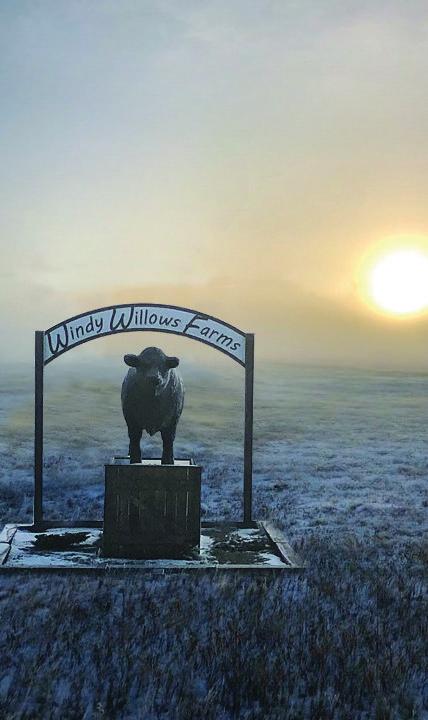



New provincial regulations will restrict the possession of capsaicincontaining wildlife control products (or ‘bear spray’) in public urban spaces in Saskatchewan. The regulations will also prohibit defacing or altering bear spray in order to hide or disguise the product’s identity. Those charged under the regulations could face potential fines of up to $100,000.
“Over the last few years, there have been thousands of public disturbances involving bear spray across the province,” said Justice Minister and Attorney General Bronwyn Eyre.
“These new regulations will improve public safety and provide police and wildlife officers with more options to seize and charge people in possession of bear spray, including in shopping malls, movie theatres, urban parks and on exhibition grounds.”
• The regulations will apply only to public urban areas, not rural or northern areas where bear spray is typically used for safety purposes.
• The regulations will not apply to those, including conservation officers, hunters, and hikers, who require protection from
wildlife in the course of their employment or recreational activities.
• People will be permitted to transport bear spray from a retail location to a place where it can be lawfully stored (eg., a private home) or lawfully used (eg., a camping trip).
• Lower capsaicin-concentration products (such as ‘dog spray’) will not apply under these regulations.
• The regulations also do not apply to retailers or impose additional recordkeeping or identification requirements.
“These regulations are designed to ensure individuals who require bear spray for legitimate safety purposes are not impacted,” Corrections, Policing and Public Safety Minister Paul Merriman said. “Law enforcement will have the authority to identify and seize the product from any individual violating the regulations, which may also lead to charges.”
In limited, appropriate instances, a person may also be permitted to carry bear spray in an urban space if the holder can demonstrate a reasonable need to carry the product for protection; for example, if a bear was recently sighted near their community.
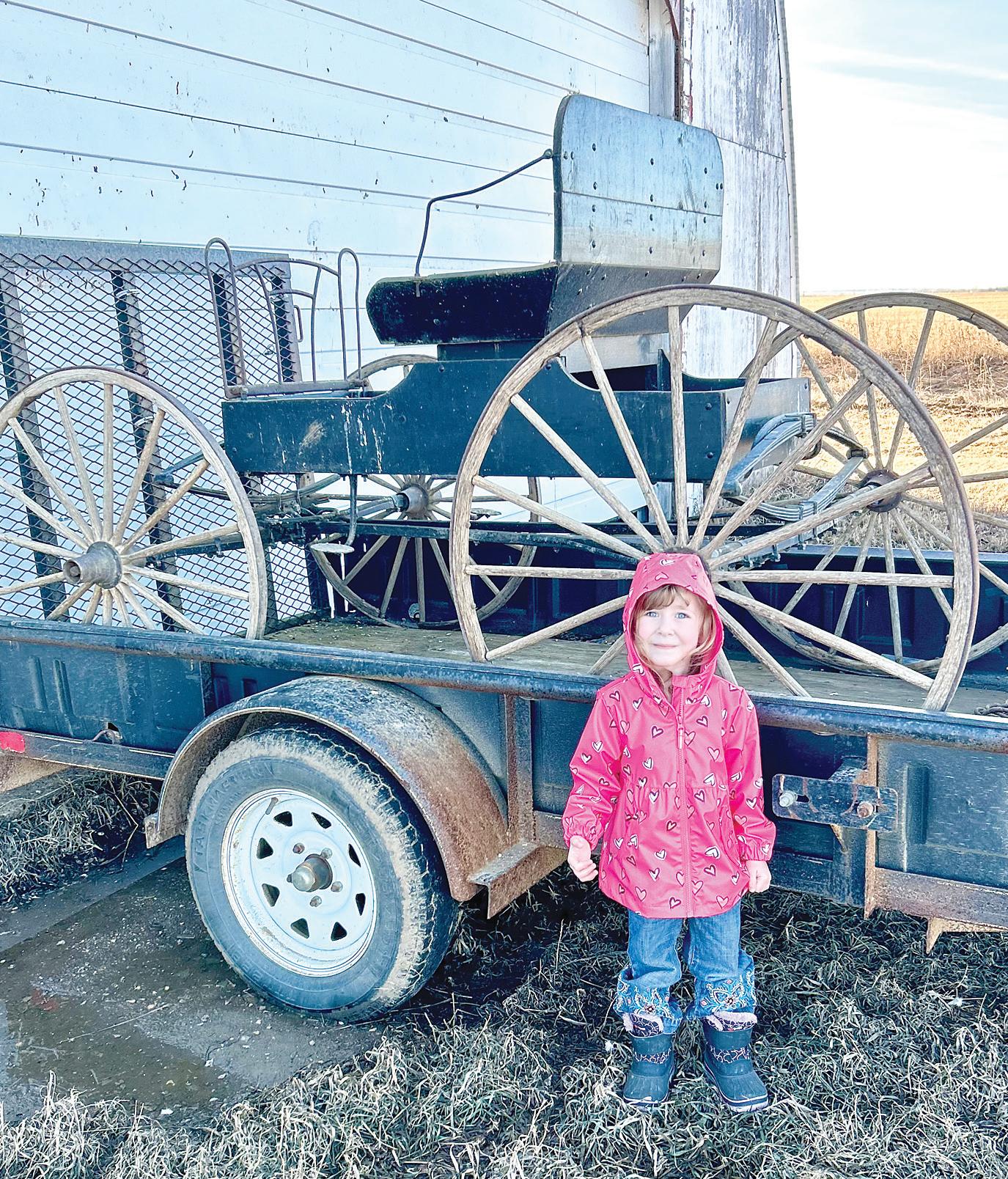

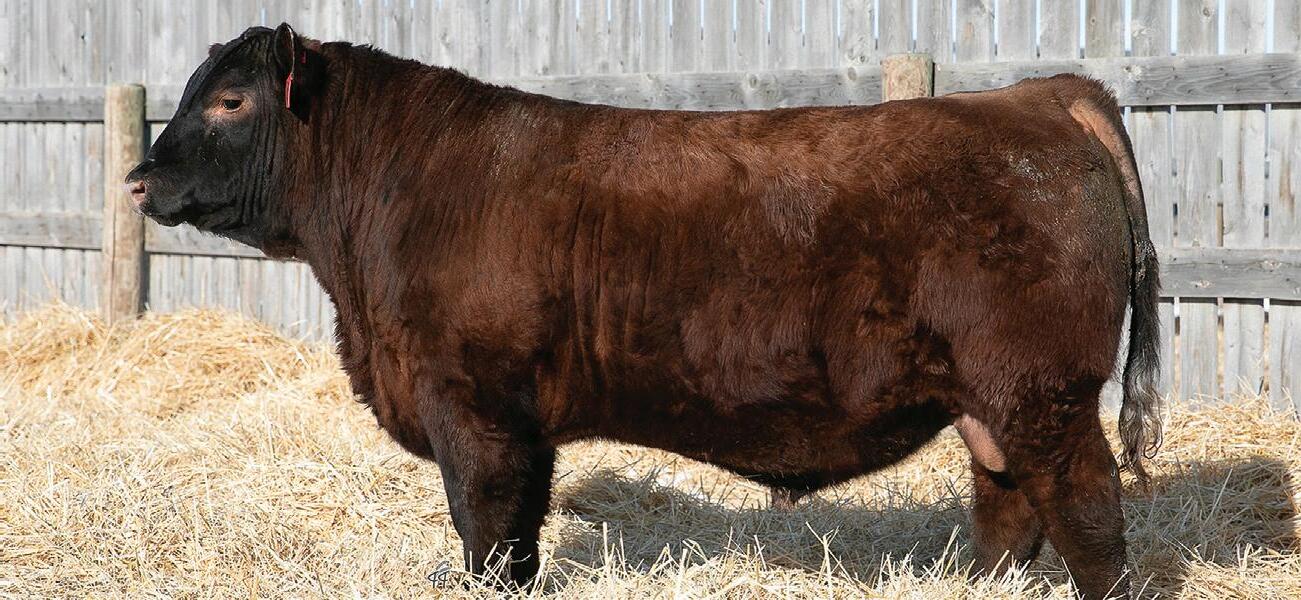



Fourteen new physicians are now practicing in rural communities across Saskatchewan after completing the Saskatchewan International Physician Practice Assessment (SIPPA) program in December.
Planning is underway to further increase the number of training seats that SIPPA offers. The number of training seats was previously expanded
from 36 to 45 each year under Saskatchewan’s Health Human Resources Action Plan.
Over the past 12 years, 539 physicians from around the world have successfully completed the SIPPA program. Currently, 304 are practicing in the province, 77 per cent of whom have established practice in rural or regional communities.
“SIPPA plays an im -
portant role in our ongoing physician recruitment efforts, and we are pleased to see its continued success,” Rural and Remote Health Minister Tim McLeod said. “I extend my sincere congratulations to the latest group of physicians to complete the program and am happy to welcome them and their families to communities throughout the province.”
The SIPPA program
assesses internationally educated physicians on their medical training and clinical ability as part of the licensure process to practice medicine in Saskatchewan. Through a return-of-service contract, they agree to work in the province for a minimum of three years upon completion of the SIPPA assessment.
Physician recruitment and retention efforts in the province are ongoing. Recently, Saskatchewan physicians accepted a competitive new four-year contract which includes a general rate increase as well as increased funding to support long term retention, parental leave and continuing medical education.
The Rural Physician
Incentive Program also offers up to $200,000 over five years to help recruit physicians to rural and regional communities.
Physicians interested in working in Saskatchewan are encouraged to contact the Saskatchewan Health Care Recruitment Agency directly at info@saskdocs. ca, toll-free 1-888-4153627 or 306-933-5000.
CONDITIONS:
1)
;
2) Highest or any tender not necessarily accepted;
3) Tenders considered on individual parcel(s), indicating which quarter they apply to;
4) A cheque for the amount of 3% of the amount of bid must accompany the bid;
5) Tenders must rely on their own research and inspection of the property and confirm acres, assessments and other particulars. Land sold as is and where is;
6) No tenders subject to financing or other conditions will be accepted;
7) Tenders will not be called to the office of the undersigned to finalize the sale: Additional Conditions & Details : www.andersonandcompany.ca/land-tenders
Forward bids & inquiries to: Morris Froslie, Anderson & Company, File #35057-001F




held on March 16 and 17. The curling was at its best with the A Final winners being Hal McEwen, skip; Travis Gravelle, third; Treyton
The Assiniboia RCMP responded to 25 calls for service during the week of March 4 to 10.
These included:
- 911 Misdial - 1
- Assault - 1
- Assist General Public/ Canadian Agency - 2 - Breach of Peace - 1
- Controlled Drugs and Substance Act - 1
- Coroner’s Act –Sudden Death - 1
- False Alarm - 2
- Family Law Act - 1
- Family Orders and Agreements - 1
- Fire Prevention Act - 1
- Letter Writers/ Talkers Nonsensical - 1
- Mental Health Act - 1 - Mischief - 2
- Operation while Impaired - 1
- Other Provincial Acts - 1
- Person Reported Missing - 1
- Traffic infractions - 1
- Theft Under $5,000 - 1
- Suspicious Person - 2 - Wellbeing Check - 2






There were 13 teams that competed during the annual Ladies Curling Bonspiel, held March 15 and 16 at the Assiniboia Curling Rink.
The Ladies Curling Bonspiel ended with: Team Gay Lewis won the A event; Team Kelly Elder won the B event; Team Tess Ariss won the C event; Team Wyleen Hantelman won the D event.
At top, Zaida, Brandi, Wyleen and Katelyn were dressed to kill. At bottom left, Alyssa, Kelsey, and Afton were ready to have some fun. Missing from the photo was Andi.

WANTED PARTS SPECIALIST ASSISTANT PARTS SPECIALIST REQUIREMENTS
• Team player
• Computer skills
• Parts or mechanical experience an asset POSITION
Mon-Fri, 8-5:30
Contact for more information CONTACT
leannetw@gwae.ca
GREAT BENEFITS!

When you experience a minor ailment, talk to your local pharmacist about your options for over-the-counter or prescription medication treatment.
When you experience a minor ailment, talk to your local pharmacist about your options for over-the-counter or prescription medication treatment.
Exercise is widely recognized as a vital component of a healthy lifestyle. More than twothirds of individuals are not getting enough exercise.


SOUTHLAND CO-OP PHARMACY ~ ASSINIBOIA
SOUTHLAND CO-OP PHARMACY ~ ASSINIBOIA
306-642-4766
306-642-4766


For more local news and stories, visit our website and click on the “South” button.
Routine exercise is beneficial for people of all ages, and seniors are no exception. Aging adults can speak with their physicians and ask these three questions to ensure the transition goes smoothly.
Should I get a heart checkup: it’s best to discuss heart health in greater detail prior to beginning a new fitness regimen. The risk of heart attack or cardiac complications slightly increases when individuals begin to participate in a moderate or intense activity.
Which types of activities: A physician also can recommend certain activities depending on a person’s age and medical background. Aging individuals with physical limitations that require them to use a wheelchair should not write off their ability to exercise, as physicians can recommend exercises for patients with mobility issues as well.
Should I take extra caution: Prescription medication use is another variable that must be taken into consideration before beginning a new exercise regimen. The dynamic between medications and exercise is unique to each medication, and makes it important to speak to a physician.







Dale Feucht
It is with broken hearts we announce the passing of our dad, Carlton “Dale” Feucht. Husband, dad, grandpa, and great-grandfather, with family by his side. Dad’s neurosurgeon called him “resilient” and a “gallant fighter” during his fourmonth battle with Glioblastoma Bi-frontal brain tumors. Dale was born on June 22, 1943, in Meadow Lake, Saskatchewan, and passed away on March 5, 2024, in Assiniboia, Saskatchewan. Dale is lovingly survived and will be greatly missed by his daughter, Terri Feucht (Calvin Fender); grandson, Chase (Crystal Kelly) Hepworth; greatgranddaughters, Aria Hepworth and Caidence Hepworth; granddaughter, Raquel (Spencer) McNamara; great-grandson, Harvey McNamara; greatgranddaughter, Stevie McNamara; grandson, Travis Hepworth, and fiance, McKayla MacQuarrie; granddaughter, Christie Fender; son, Keith Feucht (Carol Banks); granddaughter, Daneka Feucht; son, Richard (June) Feucht; grandson, Justin Feucht; and granddaughter, Sophie Feucht. Dale is survived by his sister, Lois Feucht (Schreiner); brothers-in-law and sisters-in-law, Bruce (Sandra) Handley, Marie Keenan, Joseph (Theresa Handley), Belinda Johnstone, Mark (Kim) Handley, and numerous nieces and nephews. Predeceased by his wife of 55 years, Opal Feucht; his parents, Carl and Edna (Lunam) Feucht; infant brother; brother-in-law, Bob Schreiner; parents-in-law, William and Antoinette (DeLaronde) Handley; brothers-in-law, John Keenan and Garnet Johnstone. Dale and Opal met in high school in Meadow Lake and were married on November 3, 1962. While Opal attended business college in Saskatoon, Dale worked briefly at the Nickel mine in Thompson, Manitoba. Missing his family too much, he moved back to Saskatchewan and started working at the Co-op in North Battleford. As Dale’s career advanced with the Co-op, so did the frequency of relocations. Dale and Opal moved to Lloydminster, then Vermillion, and then returned to Lloydminster. During this time, Opal was employed as a ward/unit clerk in the hospital labs of each city/town. Dale became Co-op General Manager in St. Paul, then Wadena/Kuroki, and finally Assiniboia/Crane Valley/Willow Bunch. In 1985, Dale and Opal bought the Macleods franchise in Assiniboia. When Macleods became True Value, they also purchased the building/parking lot beside. They ran the store until 2006 when they decided to retire at ages 63 and 61 so they could permanently travel, which they enjoyed. They continued to lease the building/parking lot to Fields. They did mention at times after retiring that they missed visiting and seeing their customers. Dale and Opal both enjoyed visiting with family and friends, hiking, curling, kayaking, skiing, walking around Assiniboia for miles daily, and volunteering in the community. Mainly anything that allowed them to be outdoors and active until they each became ill. They traveled to other countries, took two cruises, and were “snowbirds” traveling South to meet up with family for 14 years. They met so many wonderful people and have strong friendships to this day. After Opal passed away in 2018, Dale continued to travel South meeting up with friends and/or to Comox Valley, B.C., where his son and family reside. Hiking, kayaking, and swimming up until heading home in mid-September 2023. In February 2023, Dale went with his daughter and family to Costa Rica where he was snorkeling, fishing, kayaking, and playing with his great-grandchildren. Dale also went to Las Vegas, his son’s wedding in Calgary, Calgary Stampede, and camping/hot springs all through BC with traveling friend Merna (Powell River) during Spring/Summer 2023. Dale was enjoying every minute of life until he became ill in late October/November 2023. Dale loved his family and being around his children, grandchildren, and great-grandchildren. We are all so sad to lose this wonderful kind man but grateful to have so many memories. Many people have told me over the years they have never met such a genuine and truly kind man. During the past four months while in the hospital, he did not ring his call buzzer - as he did not want to bother the busy nurses - even as sick as he was at times. My brothers and I have never heard my father say an unkind or judgmental statement about anyone ever - instead, he always found the good in people. He loved living and often told his kids “If I wake up in the morning and the sun is shining it’s a good day - just live and enjoy life - don’t worry so much about things, everything always works out.” We will miss you Dad - especially being able to call/Facetime or visit you almost daily. A family prayer service and graveside service will be held and scattering of ashes in various places Dad and Mom loved to spend time. Tributes in Dale’s memory may be made to the Allan Blair Cancer Centre, 4101 Dewdney Ave., Regina, SK S4T 7T1.



Pennelope May
‘Penny’ Hansen
June 17, 1925
March 1, 2024
Penny Hansen of Whitecourt, AB, 98, peacefully passed away on Friday, March 1, 2024, surrounded by her loving family. Penny was born on June 17, 1925, in Willow Bunch, SK, the daughter of Herb and Het Harkness. Penny is survived by her daughters, Lynda (Ron) Ekdahl and Myra (Charles) Egli; grandchildren, Derek Ekdahl, Devin (Bonnie) Ekdahl, Christa Egli and Chad Egli; great-grandchildren, Paige Ekdahl (Brody Bobilek) and Nathan Ekdahl; along with numerous nieces, nephews, and friends. Penny was a strong, independent woman who raised and supported her two daughters through good times and bad. Throughout her long life, Penny was a dancer, artist, pianist, farmer, truck driver, camp cook, fisherwoman, hunter, hunting guide, seamstress, hairdresser, bookkeeper, and a fabulous cook and baker. A unique and storied woman, Penny will be missed by all who had the good fortune to know her. A Memorial Service will be held Saturday, May 11, 2024 at 1:00 pm in Ross Funeral Chapel, Assiniboia, SK. Penny will be inurned in Verwood Cemetery, SK. Photos, memories, and condolences may be shared through www.parkmemorial. com. Park Memorial, Mayerthorpe - 780-786-2533, Family-Owned Funeral Home and Crematorium.
Victor Lalonde

It is with deep sorrow that the family of Victor Lalonde announces the passing of their much-loved Husband, Dad, Grandpa, Papa, and GreatGrandpa on Tuesday, March 5, 2024, at the Foyer D’Youville in Gravelbourg, SK, with his daughters by his side. He was born on September 27, 1931, on the farm south of Meyronne, SK, the youngest child of five children of Stanislas and Marguerite Lalonde. Victor worked alongside his father on the family farm until his sudden passing in 1966. Victor was fondly remembered for his deep affection for family, farming, and ranching. He was a devoted father who lovedspending time with his loved ones, always ready to extend a helping hand to those in need. He treated everyone with kindness and affection. Victor is survived by his wife, Eunice (nee Nelson) Lalonde of 72 years; his children: son Adrian (Lori) Lalonde, grandchildren Lisa, Jason, Daniel; daughter-in-law Louise Lalonde, grandchildren Suzanne, Paulette, Andrea, Nicole, Rejean; daughter Jean (Donald) Clermont, grandchildren Jamie, Rodney, Jennifer; son Maurice (Brenda) Lalonde, grandchildren Chris, Stacey; son Richard (Janet), grandchildren Reade, Shayden, Kaitlyn; son Jules; daughter Angie (Gilles) Boire, grandchildren Tineil, Jaylene, Odessa, and great-grandchildren Trinity, Jasmine, Luke, Renee, Zoe, Josee, Emilie, Nicholas, Claire, Xander, Gavin, Michelle, Taylor, Madison, Hailey, Houston, Ciera, Raylee, Dustin, Layten, Levi, Aiden, Paytence, Holden, Bauer, Bennett, Oaklee, Graynger, Locklen, Braxtyn, Tenley, Feenix, Elliott, Brinleigh, Graham, Quinn, and great-great-granddaughter Paige. He is predeceased by his son Paul (2018); parents Stanislas and Marguerite; brother Adolphe; sisters Alice, Germaine, and Juliette. A funeral service for Victor will be held on March 30, 2024, at 11 am at Our Lady of Assumption Co-Cathedral in Gravelbourg. Friends and family are invited to attend and donations will be graciously received for St. Joseph’s Hospital/Foyer d’Youville Foundation. Lunch will be held at the Parish hall following the service.




Daniel Marcenko
It is with heavy hearts the family of Daniel Marcenko (age 89) announce his passing away on March 4, 2024 He was born on the family farm in the Elm Springs District near Wood Mountain, Saskatchewan, the fourth child of Dan and Mary (Mihalcea) Marcenko, and attended the Elm Springs School. At a young age, Daniel showed a keen interest in cattle and rodeoing, although in his early working years, he found employment working on an oil patch in southern Saskatchewan. Daniel purchased a small ranch east of Wood Mountain where he ranched and raised Herford cattle until the late 1970’s when he moved to Assiniboia. Daniel was a brand inspector with the Saskatchewan government from 1973 until his retirement in 1999 at the age of sixty-five. While working as a brand inspector, he met the love of his life, Marilyn Crawford at the Assiniboia Livestock Auction. They were married on May 31, 1984 and settled on a ranch in Congress raising Black Angus cattle. Daniel was a very knowledgeable and respected member of the cattle industry. He took a position with Big Country Co-op Finance which later became Saskatchewan Livestock Finance and held that position until August 2023. Rodeo was Daniel’s passion and he was a Gold Card Holder and founding member of the Canadian Cowboys Association where he participated in tie-down roping from its inception until the late 1980’s. He left a legacy to the Rodeo Association when his son, Curtis, followed in his dad’s footsteps and embraced the rodeo lifestyle and competitions, as well as grandsons George and Zane, granddaughter Jill, and most likely the two young great-grandsons, Luke and Steele. Daniel was so proud of everything his family did, but watching them at a rodeo, win or lose, brought him so much joy. Daniel is predeceased by his grandson, Colton Cote; sisters, Elaine (Norman) Kyle, Valerie (Alden) Hoffos; sister-in-law, Irene Marcenko, Lea (Leo) Lesperance; brothers-in-law, Neil Crawford and Wayne Crawford. Daniel leaves to mourn, his wife of almost 40 years, Marilyn (Crawford); son Curtis (Michelle) Marcenko; their children, George (Katie), and sons, Steele and Luke; Zane (Jessa) and Jill; stepson, Kevin (Denise) Cote and sons Tennesy and Tylan; brothers George and John (Audrey) Marcenko; sisters-in-law, Kathy (Albert) Lavallee, Caroline Crawford; many nieces and nephews on the Marcenko and Crawford sides of the family. He will be dearly missed by all who knew him as a family member, employee, rancher, rodeo competitor and supporter, neighbour or friend. The Prayer Service was held Friday, March 8, 2024 at 7:00 p.m., and the Funeral Mass was on March 9, 2024 at 1:30 p.m., with both services at St. George’s Roman Catholic Church in Assiniboia, Saskatchewan. Celebrant was Father George Thattoparampil. The Scripture reader at prayers was niece Tammy Hack. Funeral Mass Scripture readers were granddaughter Jill Marcenko and grandson George’s wife, Katie Marcenko. Prayer intentions given by niece Janet Miller and the eulogy was shared by niece Laurie Karst. The pallbearers were nephews James Marcenko, Darrel Marcenko, Ken Kyle, Gordon Kyle, Ryan Lesperance, and friend Wade Popescul. Interment at Mount Hope Cemetery, Assiniboia, Saskatchewan. Fond memories and expressions of sympathy for the Marcenko family may be shared at www.rossfuneralservice.com. Arrangements entrusted to Ross Funeral Service, Assiniboia, SK.


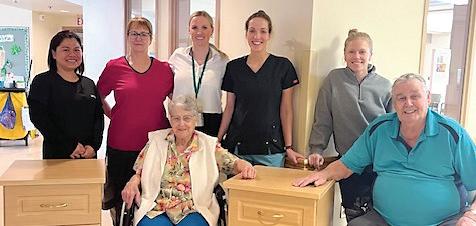



Feed & Seed
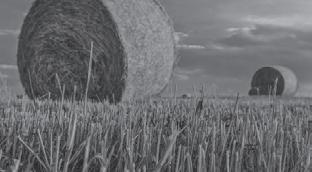





BARLEY *New - AB StANdSwell* Smooth awn high yielding grain and forage great lodging reS Stance 1St NitrogeN uSe efficieNt cereAl iN cANAdA cerveza, eSma cdc auStenSon, cdc maverick, Sundre
wheAt Pintail forage or grain oAtS ac JuniPer, ac morgan, ac muStang, derby, cdc So1 SuPer oat PeAS very early yellow Pea forage PeaS, AlSo AvAilABle


4.
5.
6.
7.



It has been quite a year for the Assiniboia U9 teams, as final games of the season featured the east Team 1 and west Team 2. The hockey players on both teams competed in an exciting game with the west Team 2 winning the trophy for the 2024 season.
1.
2.
3.
Well built office building available for sale in the town of Assiniboia. Building features two bathrooms, four offices, and a larger open office area. The crawl space has updated vapour barrier, some plumbing replaced in 2023 and a new roof in 2023. Interior is accented by solid oak doors. There is an additional 500 sf shed with furnace and AC located in rear.
Current owner would be willing to negotiate up to a one year lease back for any owner-users that are not ready to move their operations immediately.


Saskatchewan is a mining powerhouse, providing potash for agriculture, uranium for clean fuel, helium for medical and industrial use, and now rare earth elements (REE), which are used in electric vehicles (EVs), wind turbines, everyday electronics, and industrial uses.
Dan Vandal, Minister Responsible for PrairiesCan, announced funding of $6 million to support the SRC at their Rare Earth Processing Facility. This investment will help establish and commercialize a process to separate unrecovered rare earth oxides (REO) from radioactive monazite tailings that would have
otherwise been disposed of, resulting in additional rare earths sufficient to manufacture up to 65,000 EVs per year. The funding also helps to develop an automated metal smelting process to produce commercial grade REE metals. The investment is being made through PrairiesCan to support economic development and diversification and help build a stronger Prairies economy.
The funding builds on earlier support from PrairiesCan of $2.5 million in interest-free repayable funding for SRC to purchase equipment needed to establish the Rare Earth Processing Facility and a recent investment of almost
$5 million from Natural Resources Canada through the Critical Minerals Research, Development and Demonstration program.
The Government of Canada, through the Critical Minerals Strategy, is making crucial investments in critical minerals, and the foundation of a greener and more sustainable economy for the future.
The Framework was launched in December 2023 as a long-term commitment to better coordination between federal departments, driving strategic investments across the Prairies, and greater collaboration with other levels of government and Prairie partners.
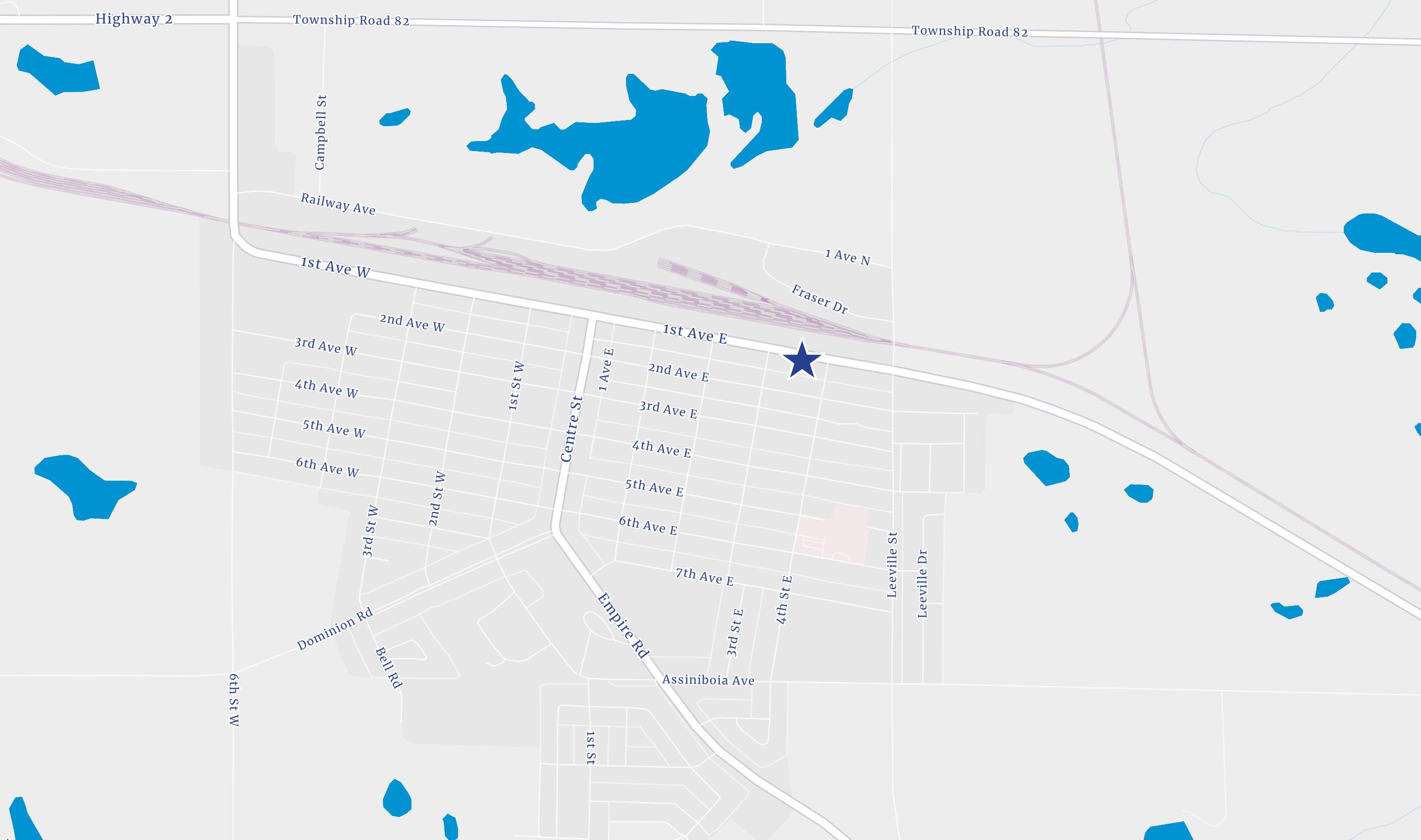
4.
5.
6.
7.
February 28, 2024 to April 17, 2024
• Property and building tours held subject to
Wednesday, April 24, 2024
• Tender submission deadline by 2:00 p.m. (CST)
Wednesday, May 1, 2024
• Award of successful Tender
• Should a Bidder be awarded, the closing date can be agreed to by the Buyer and Seller
All dates are subject to change the sole discretion of the Seller.
